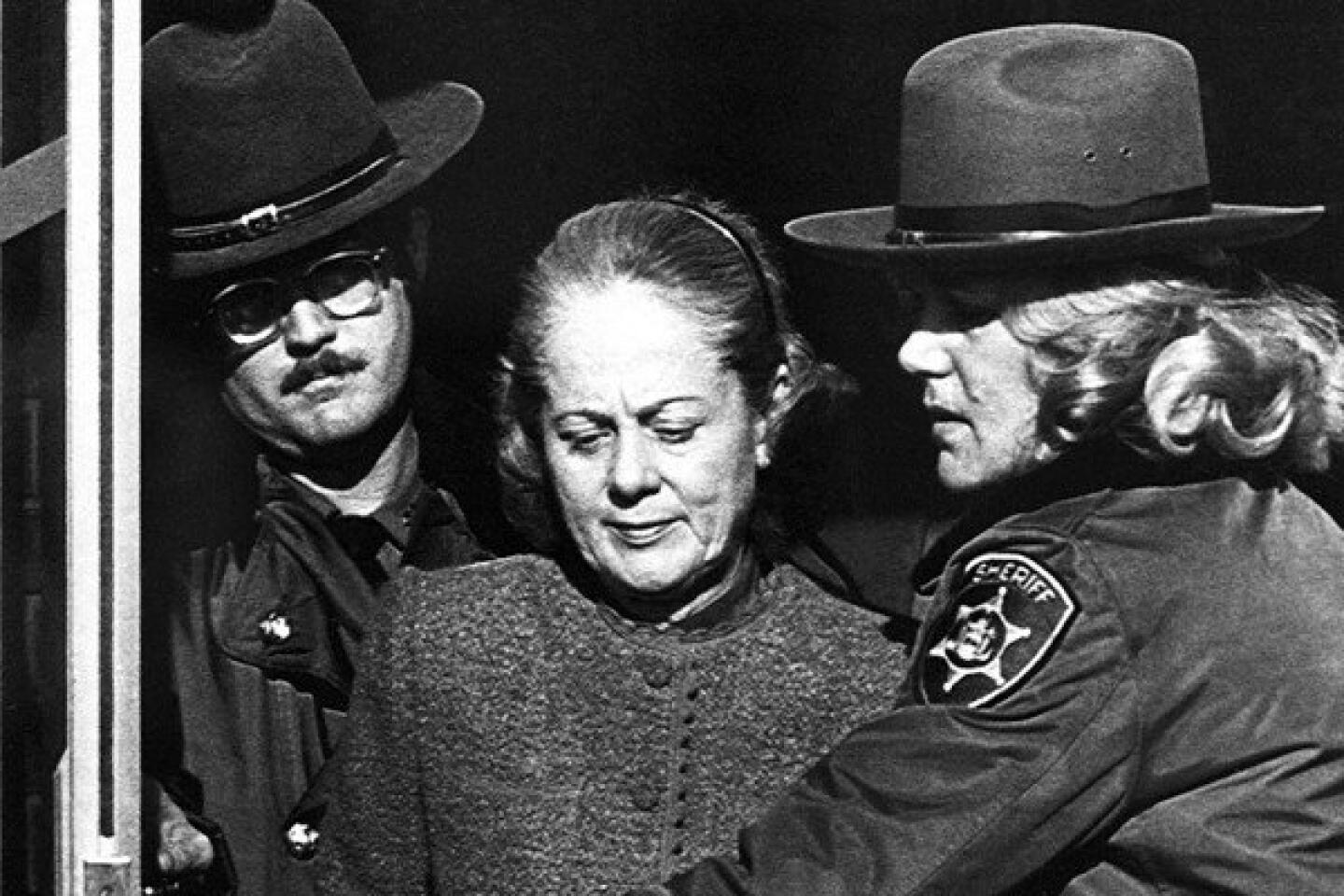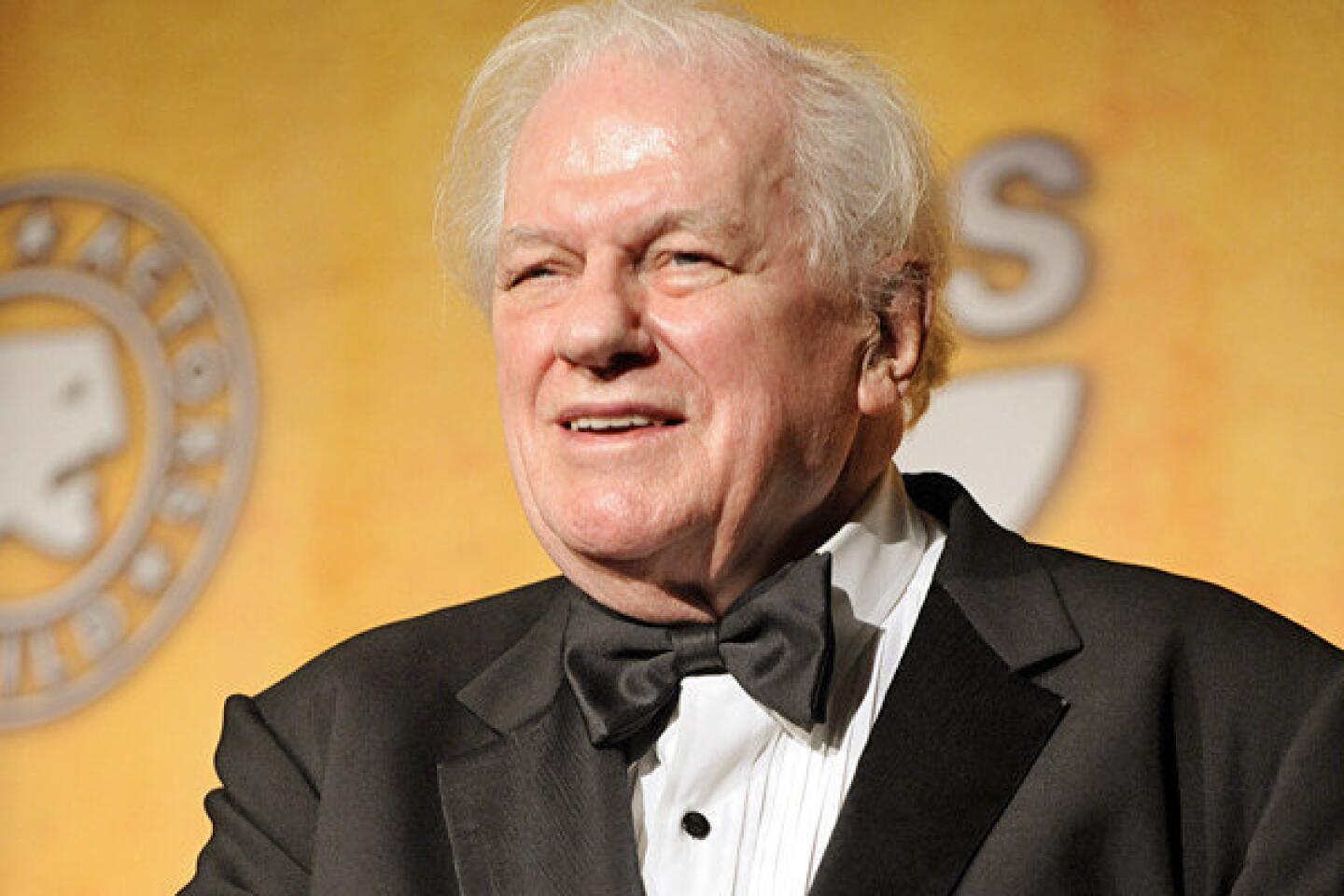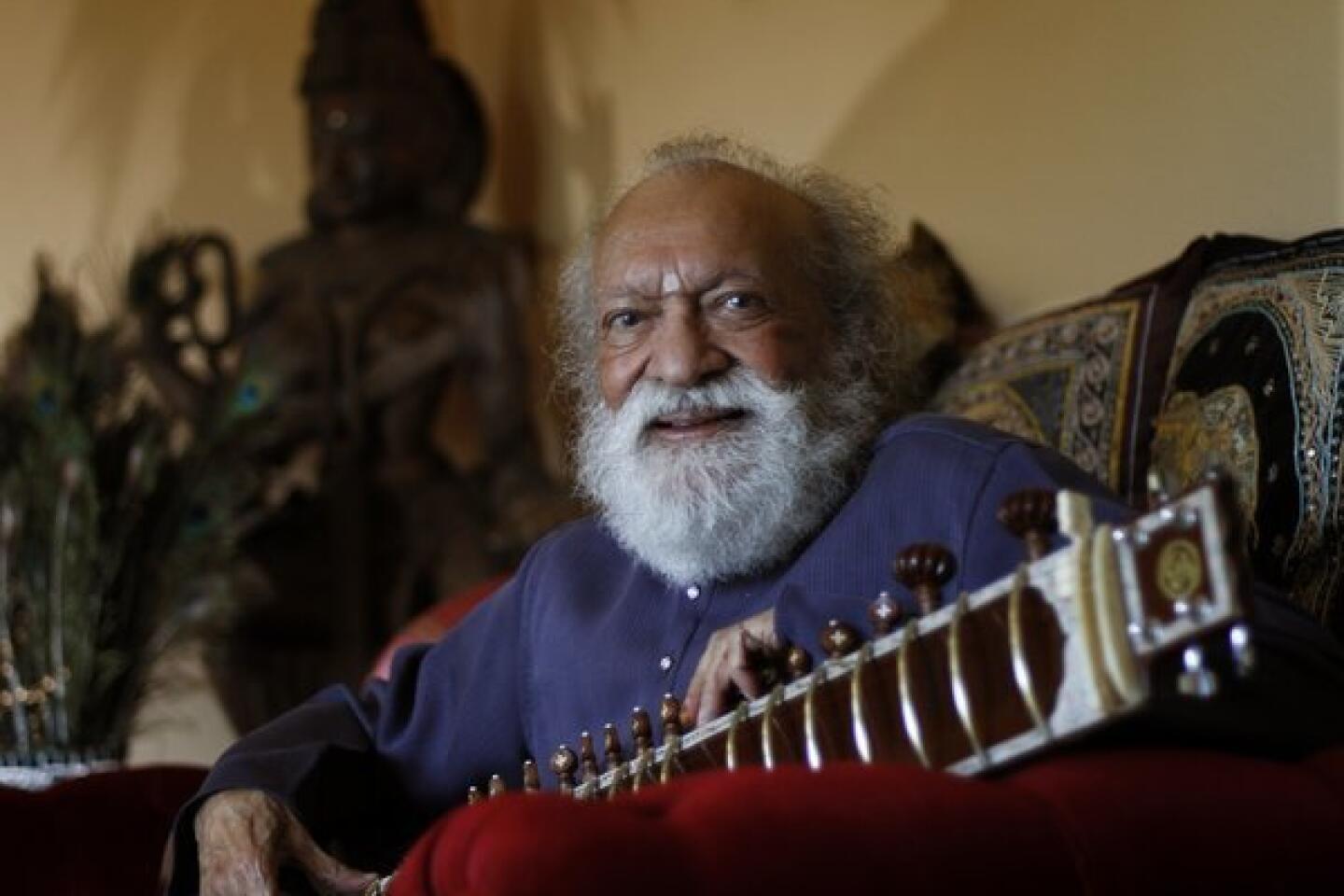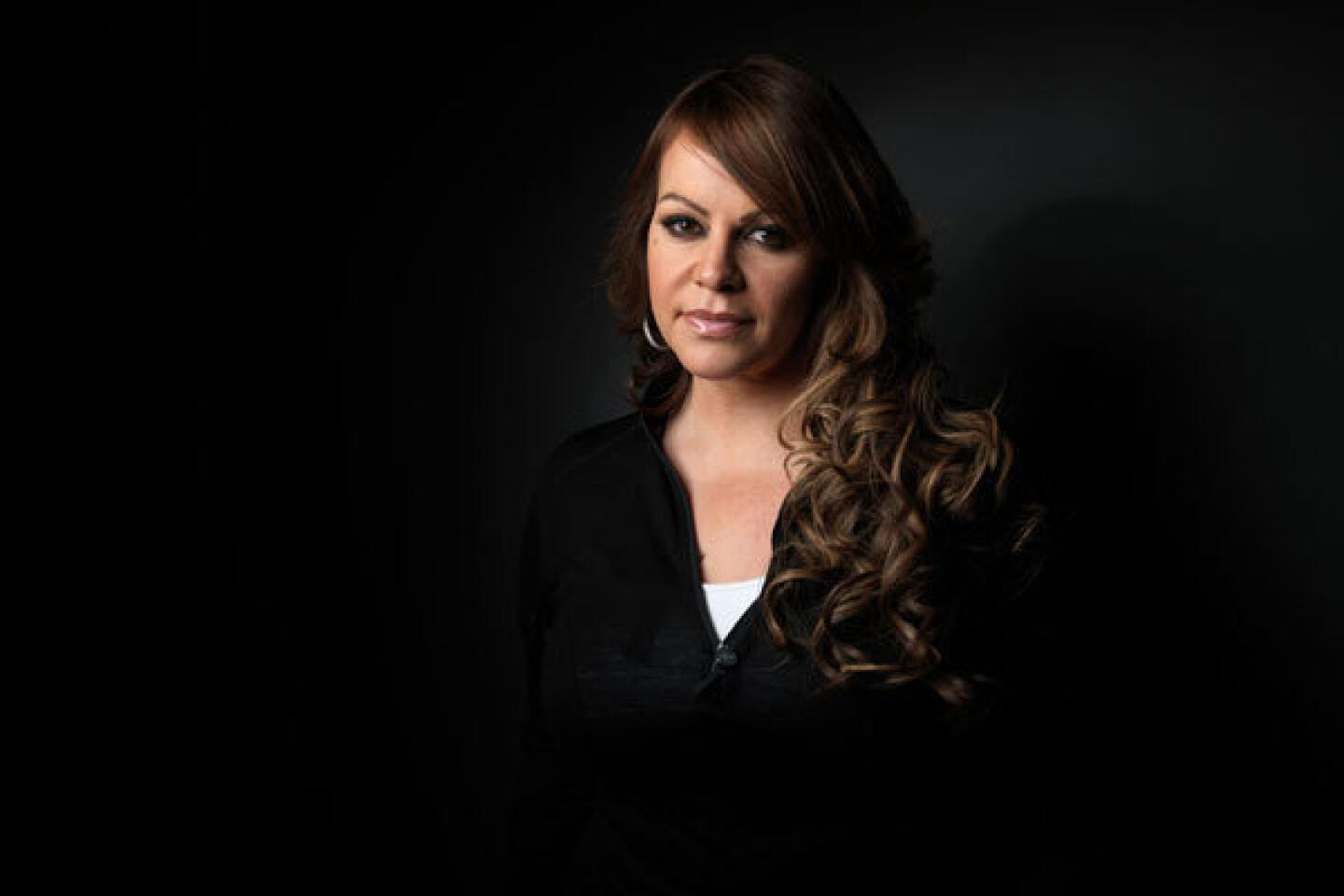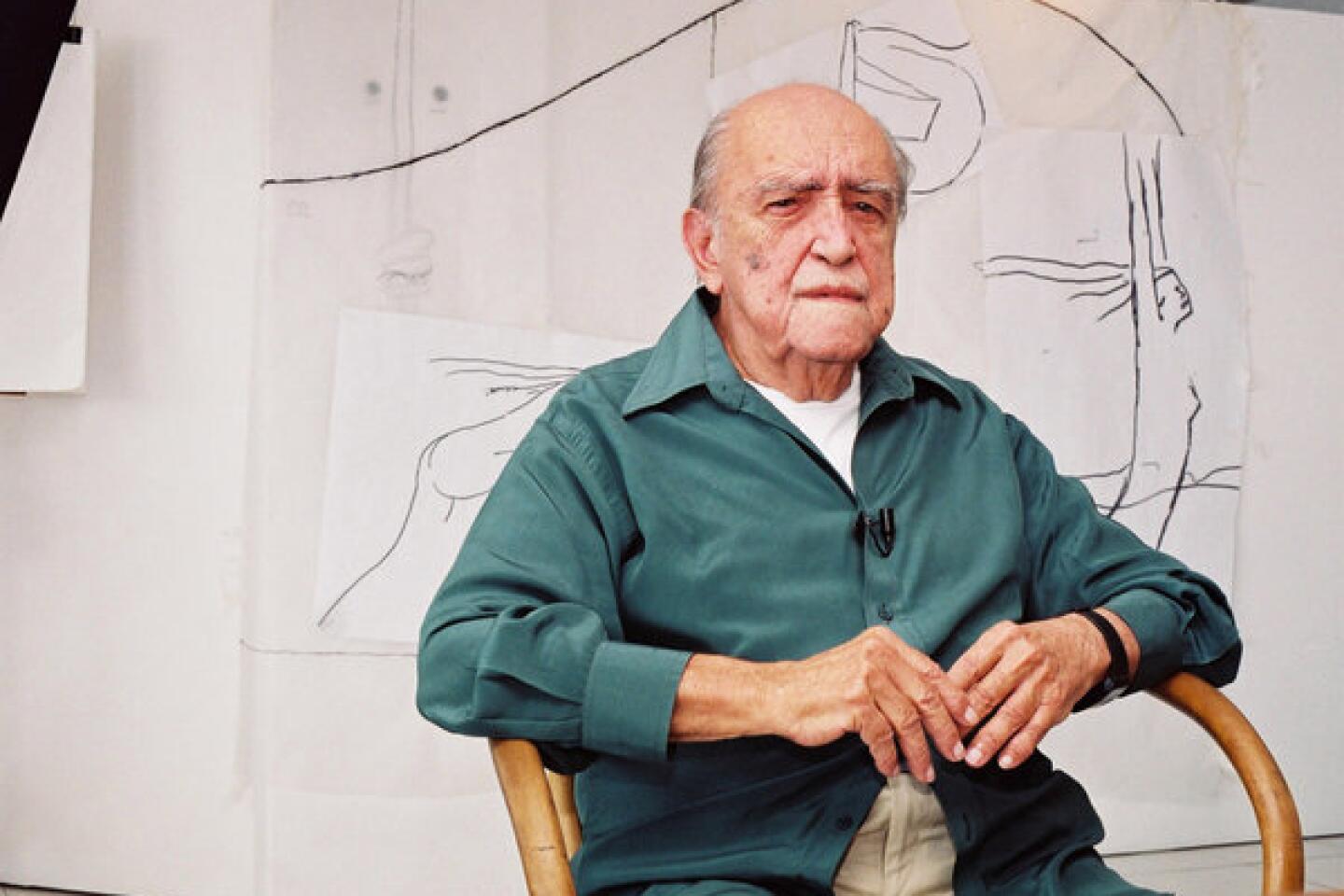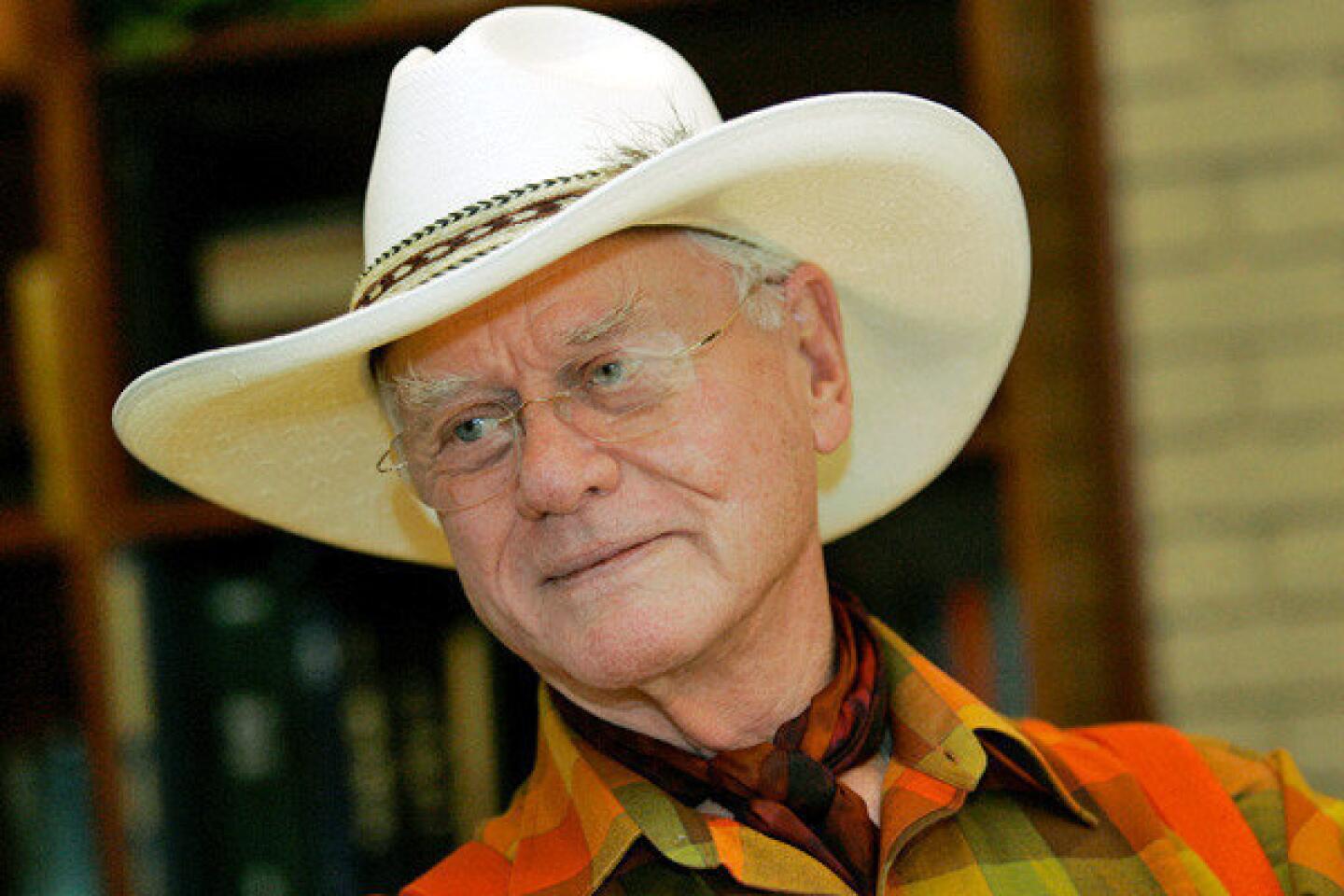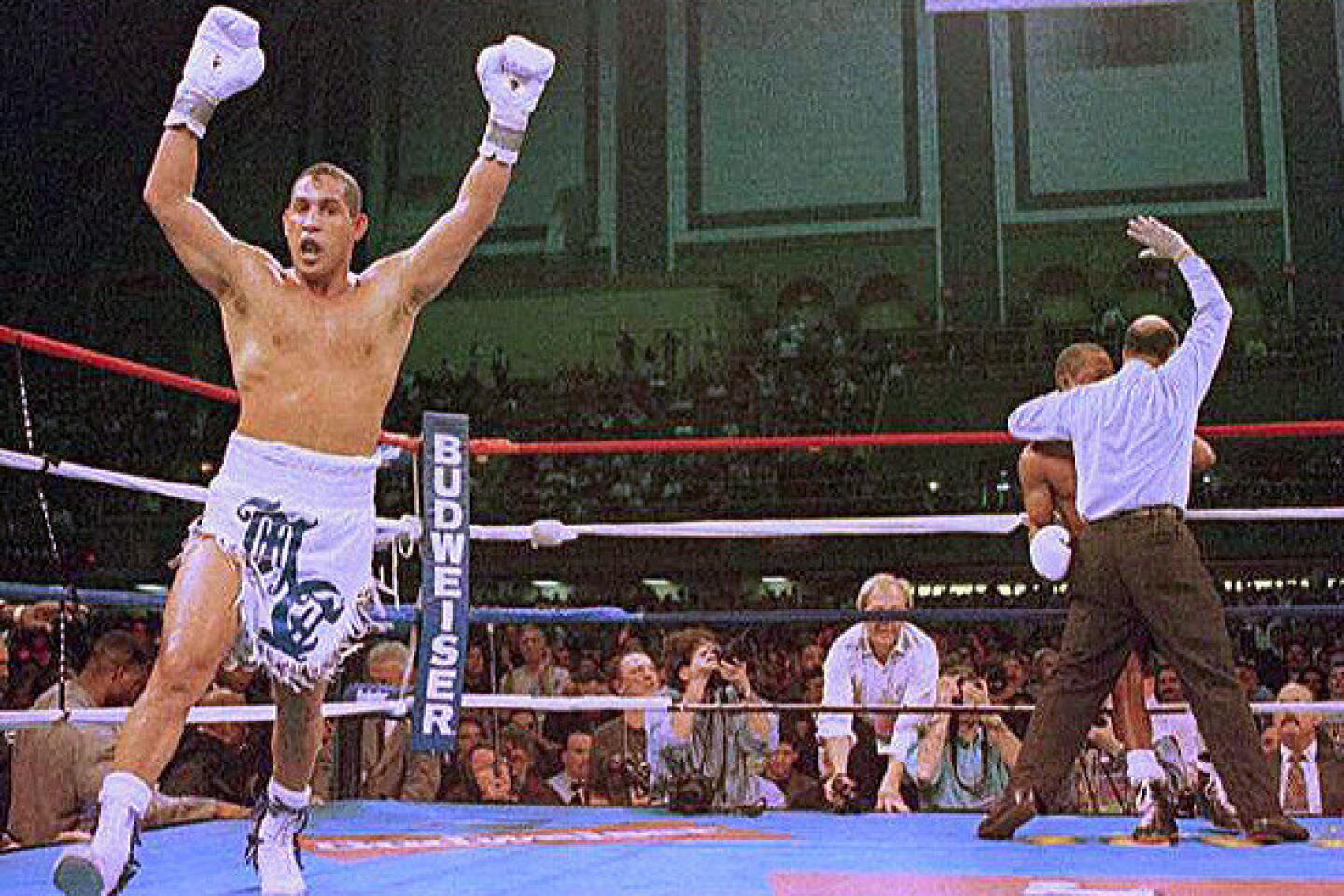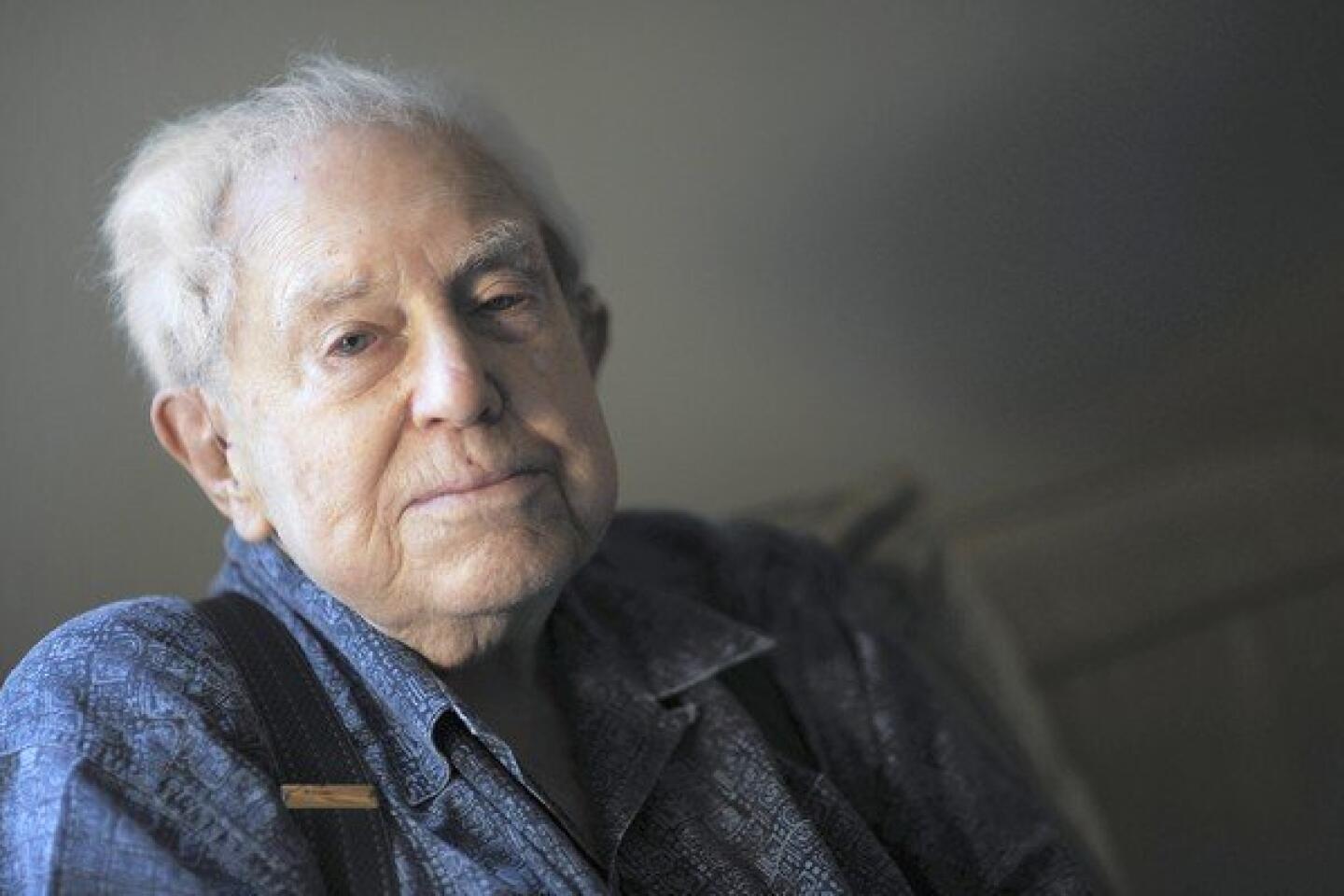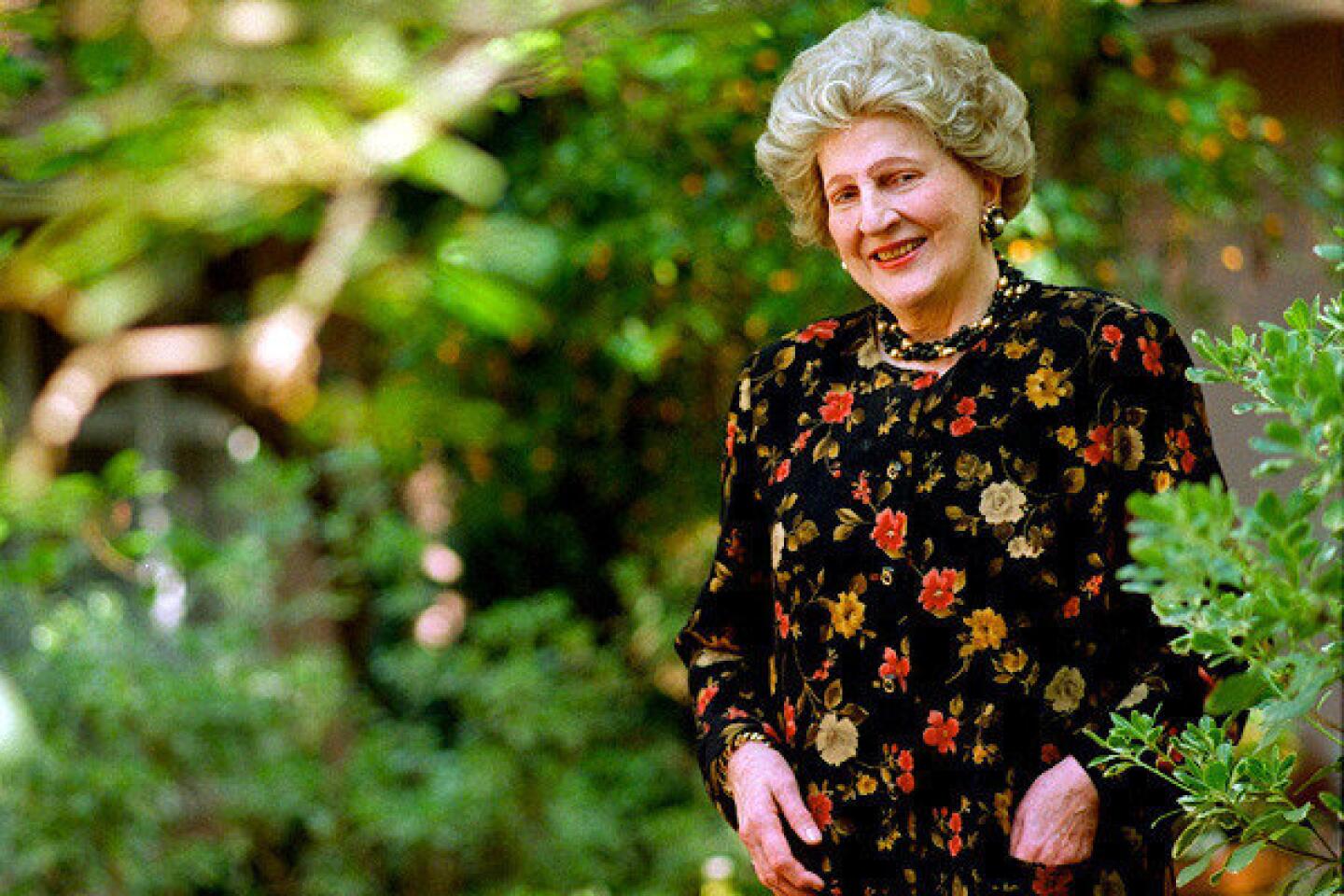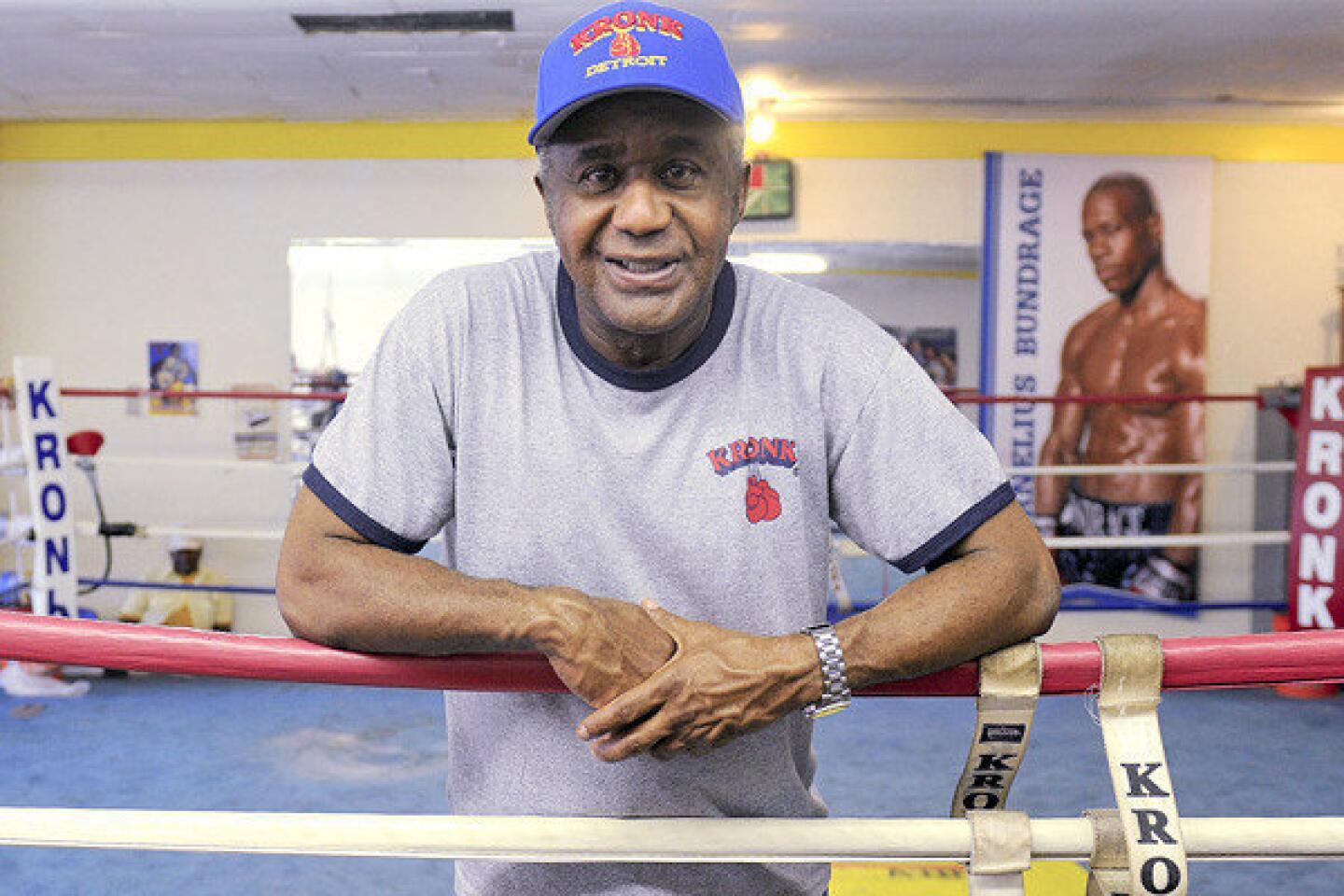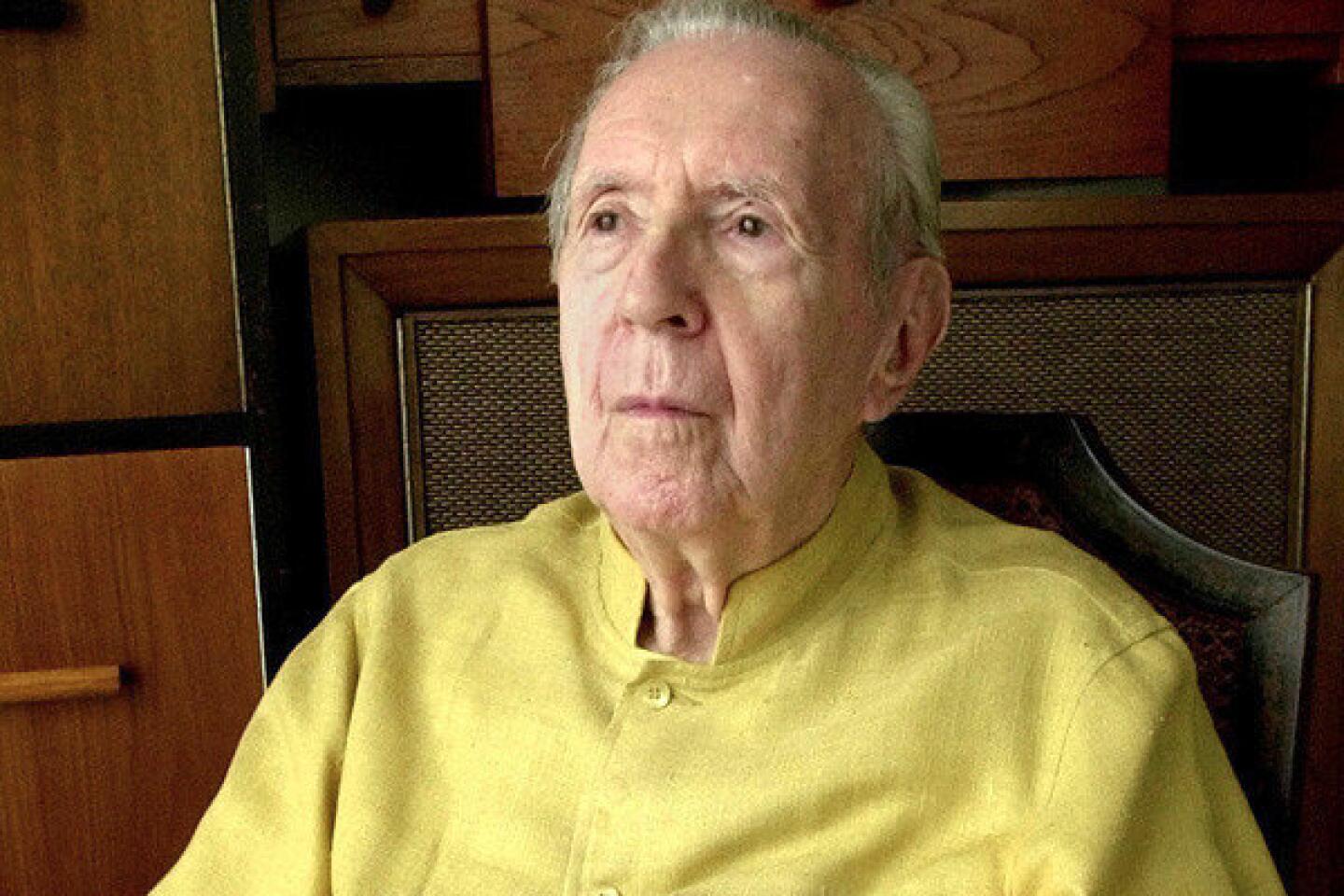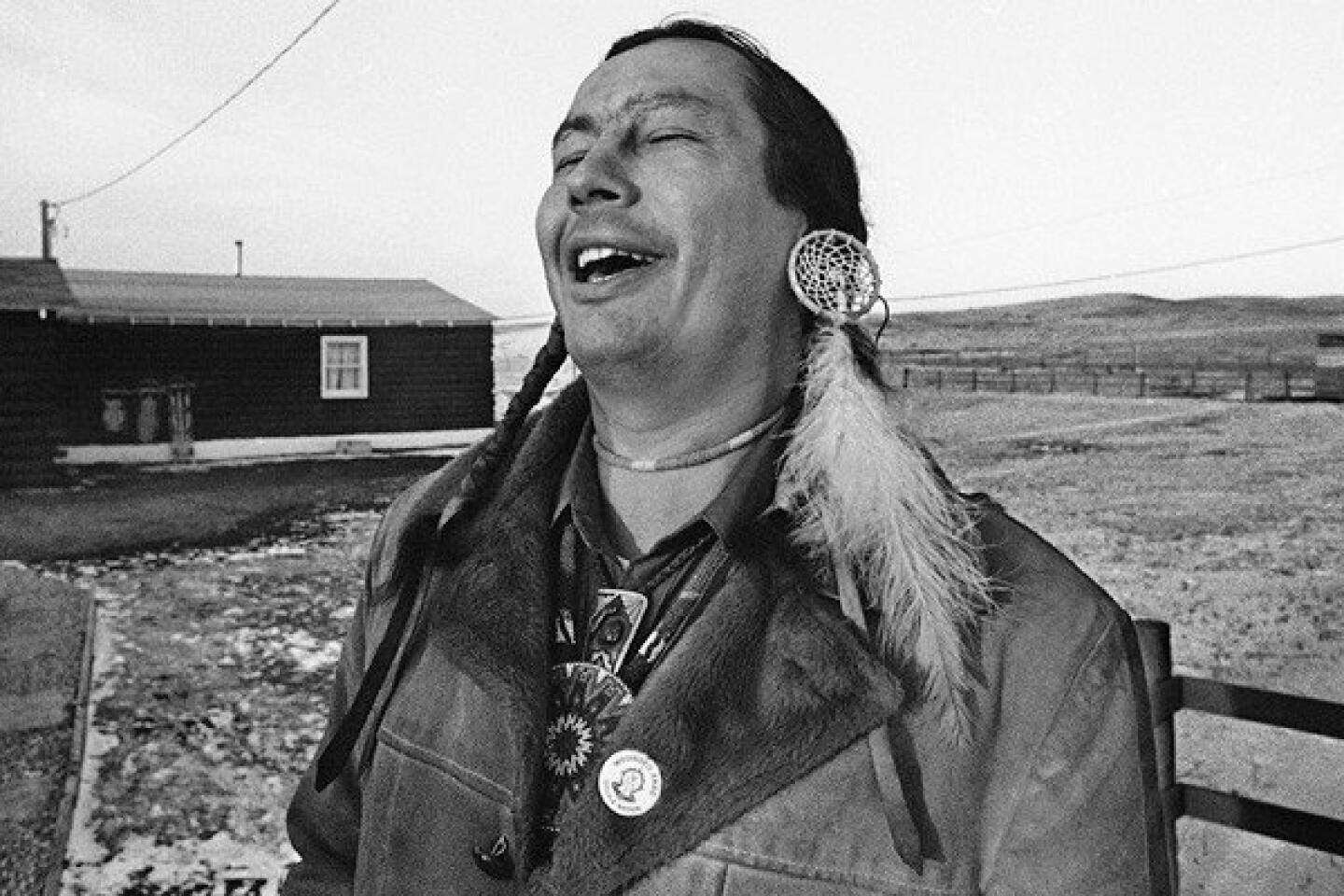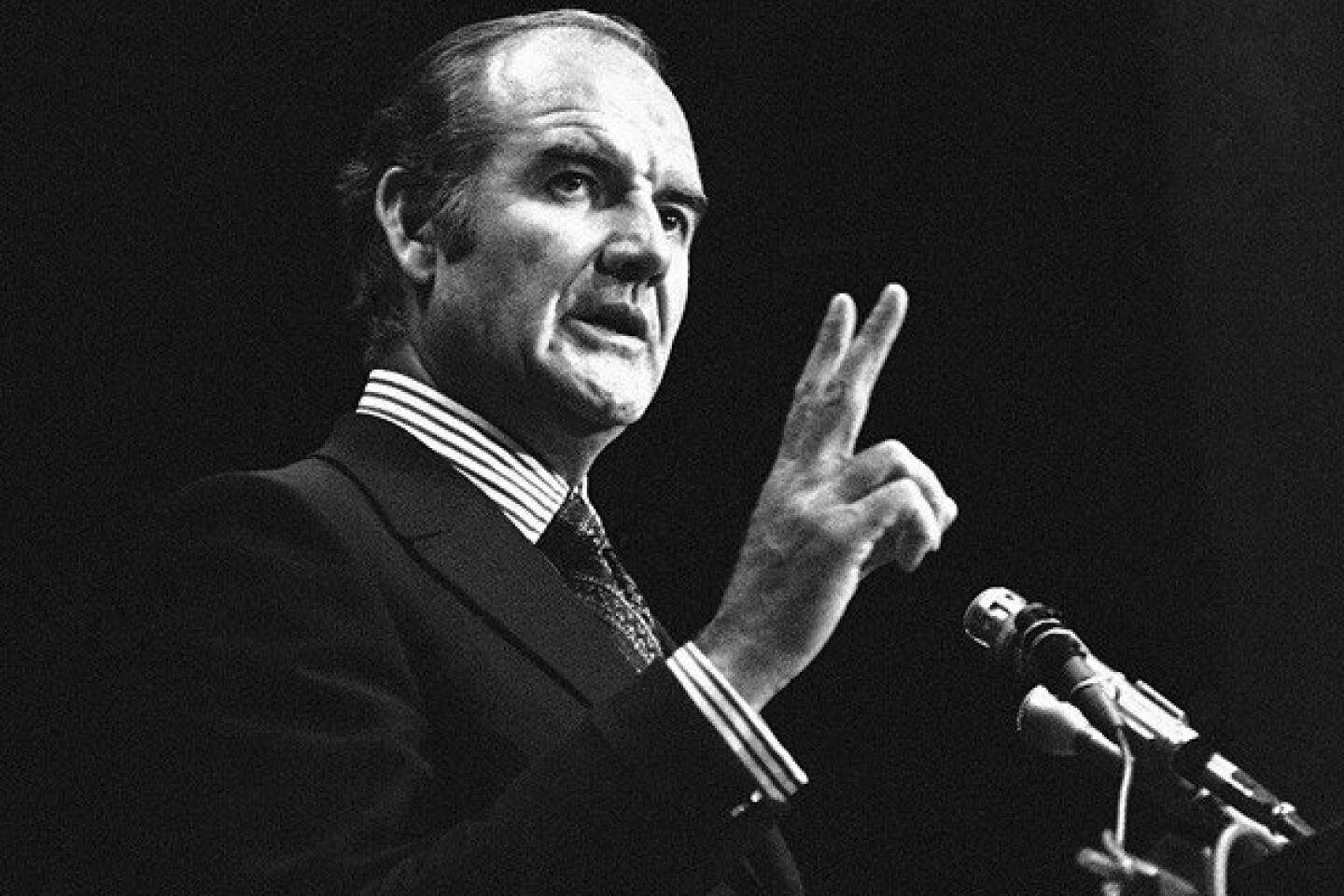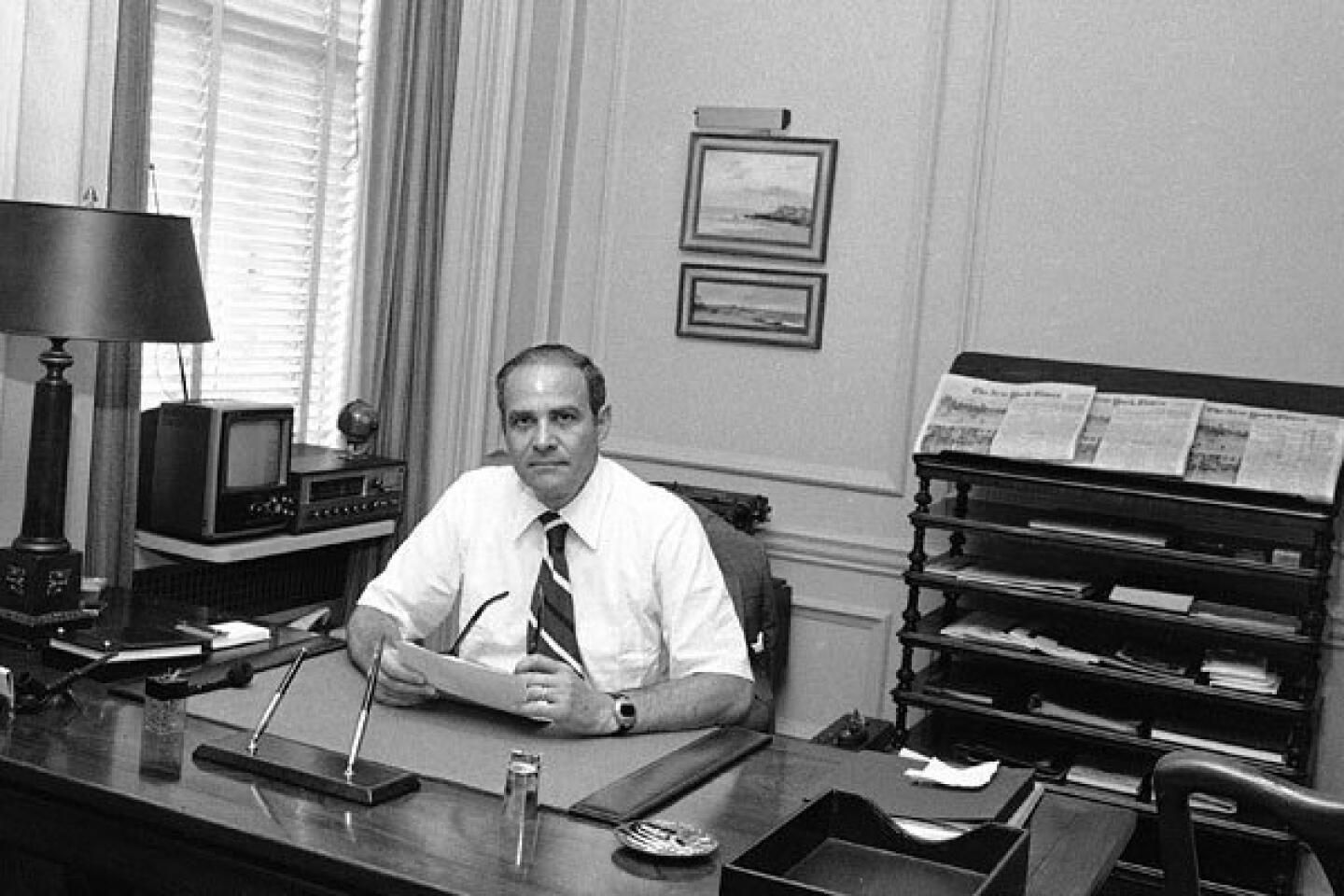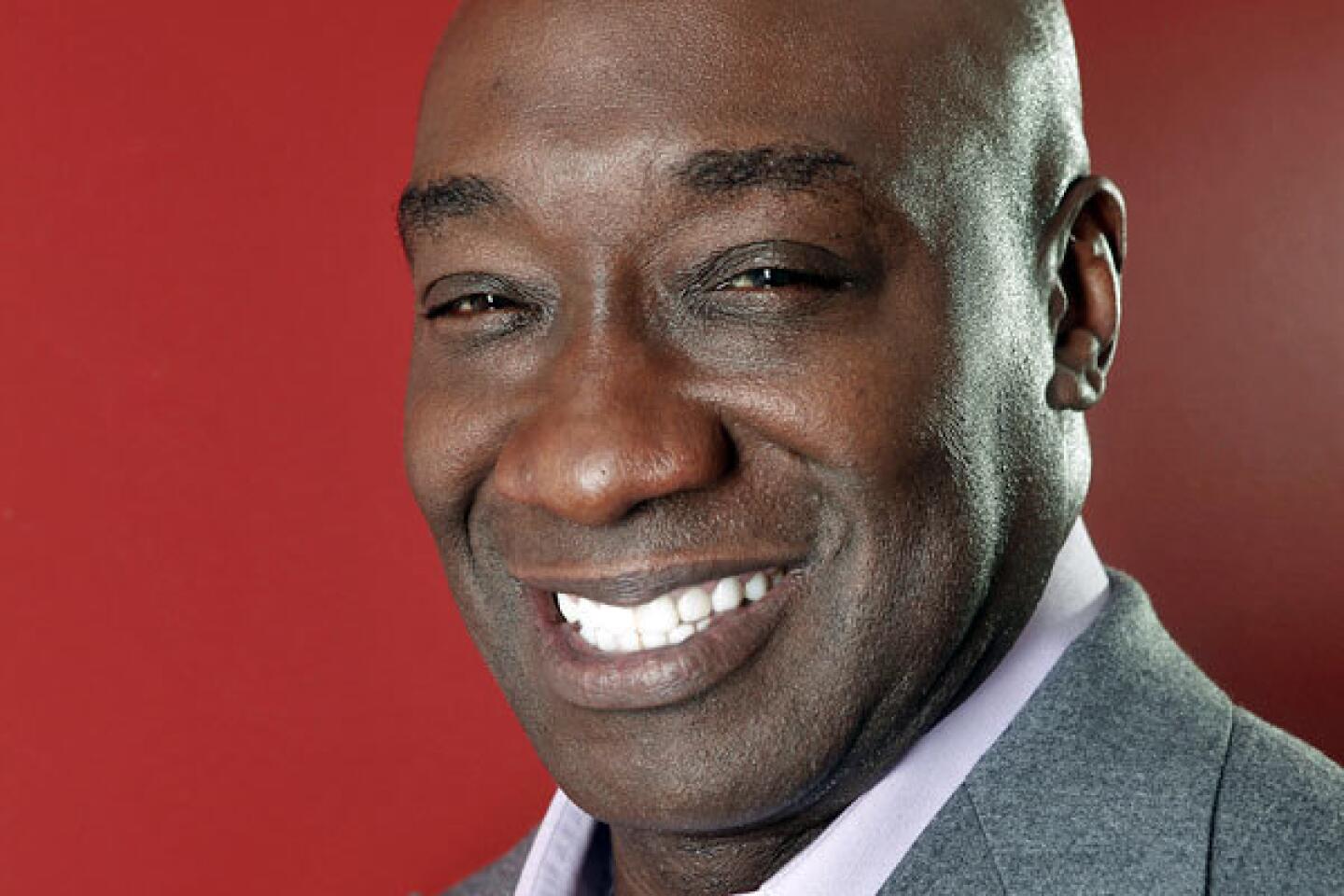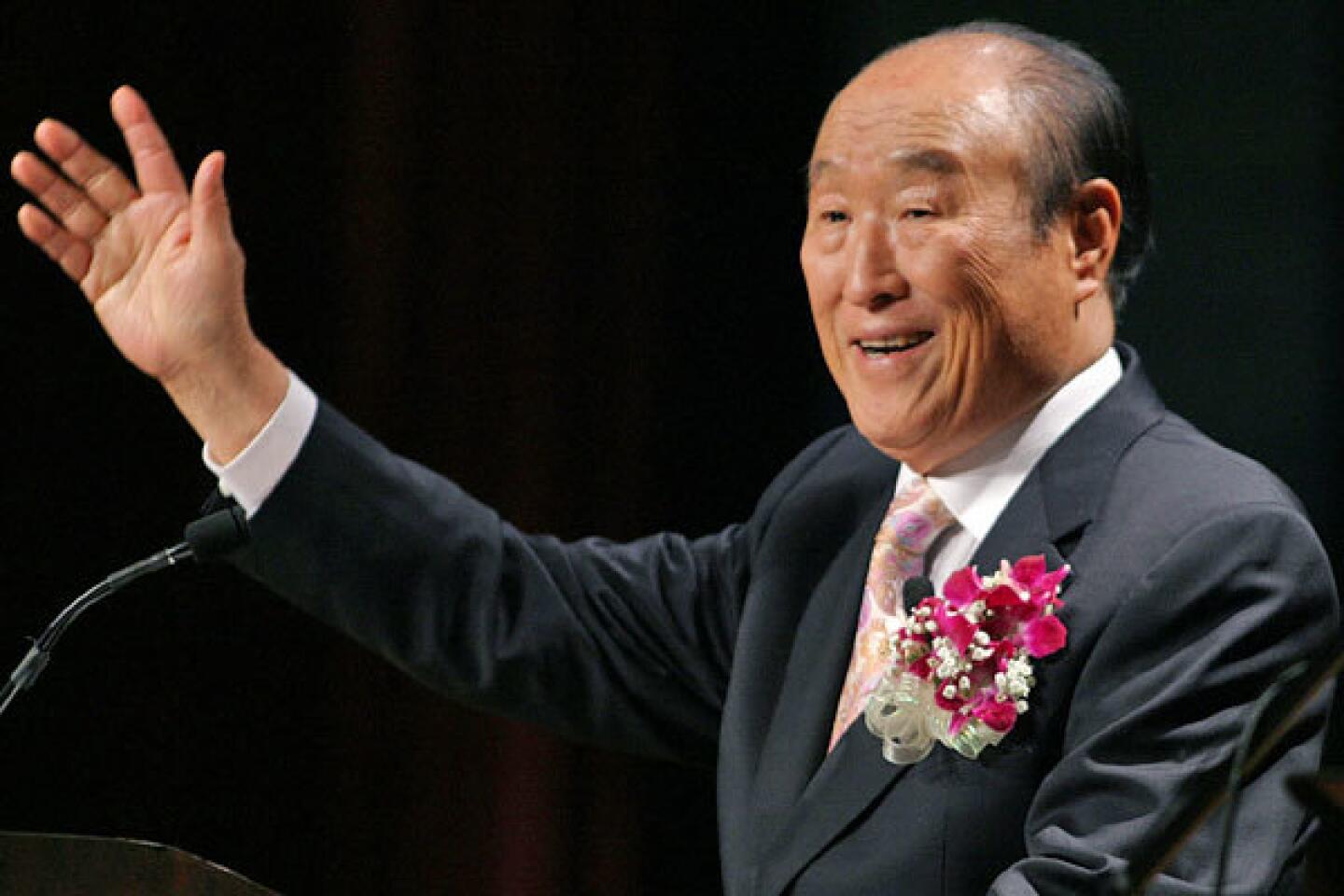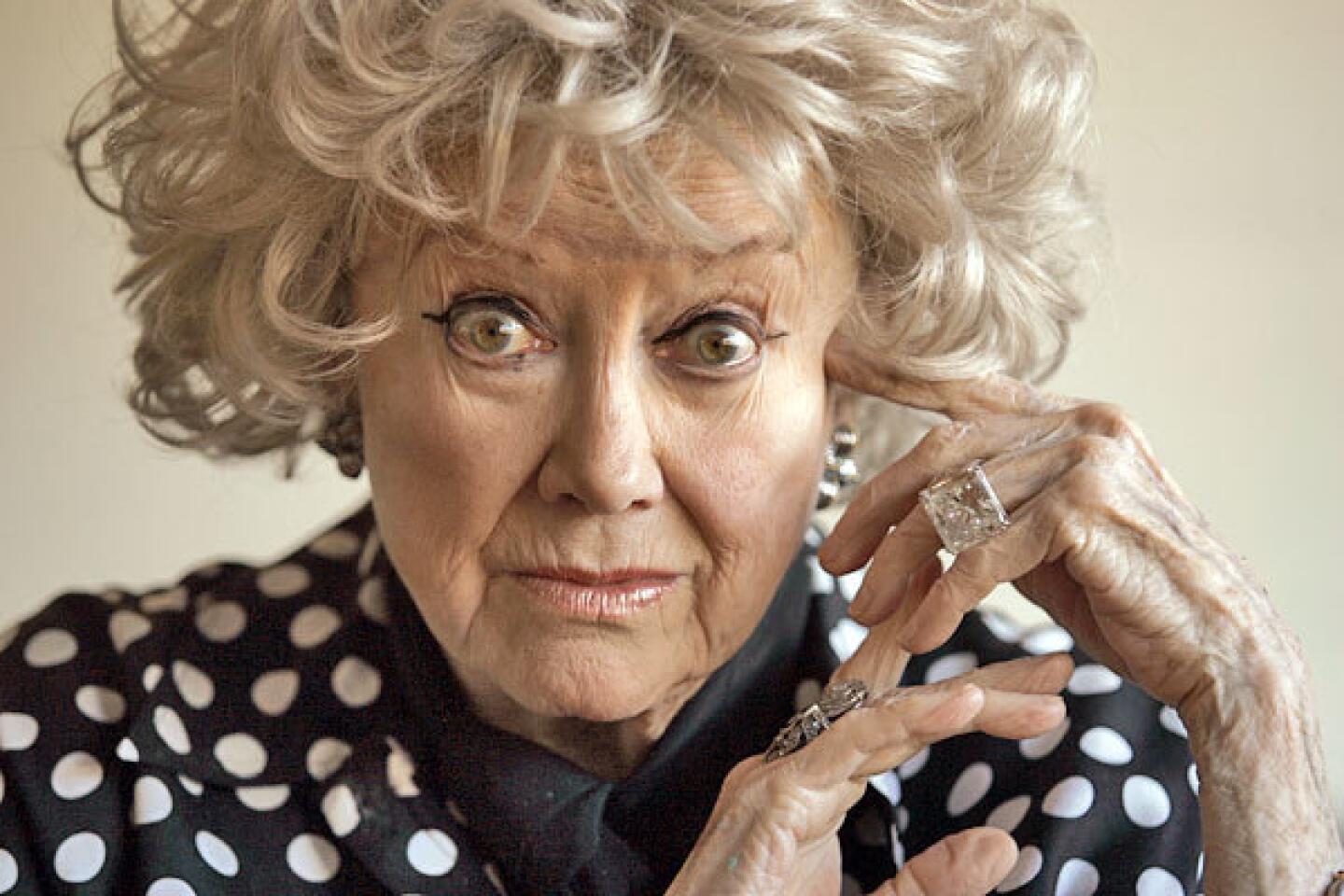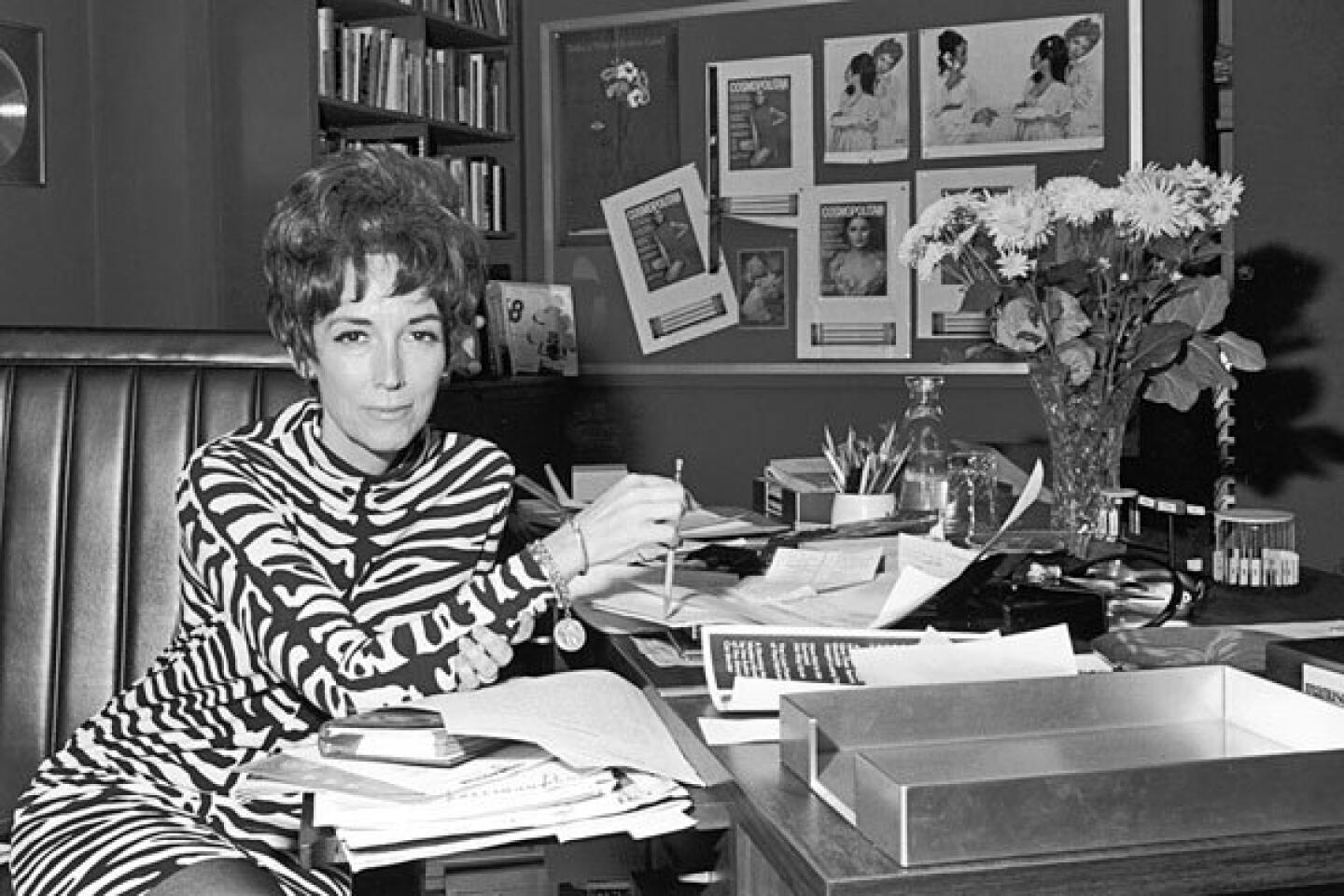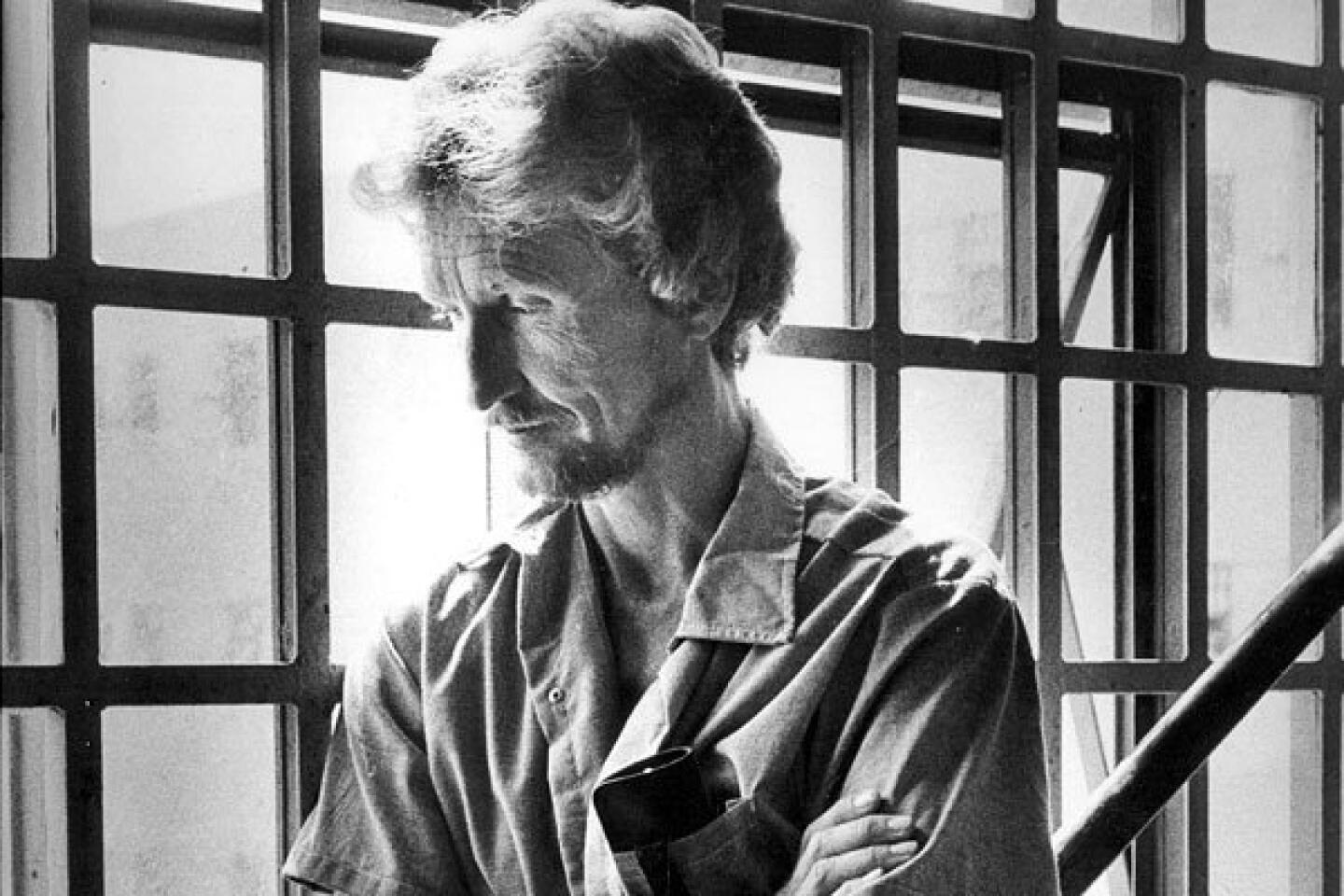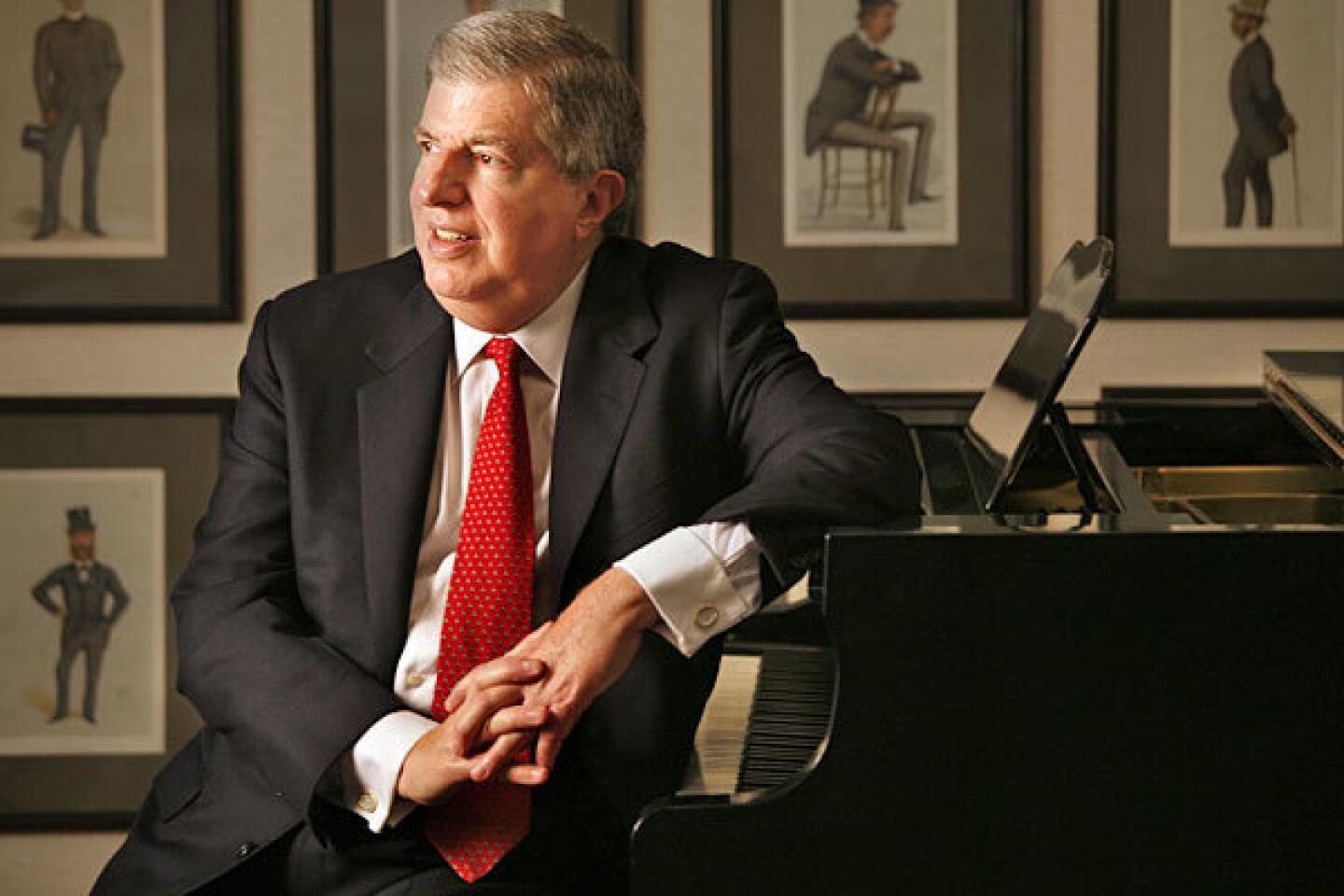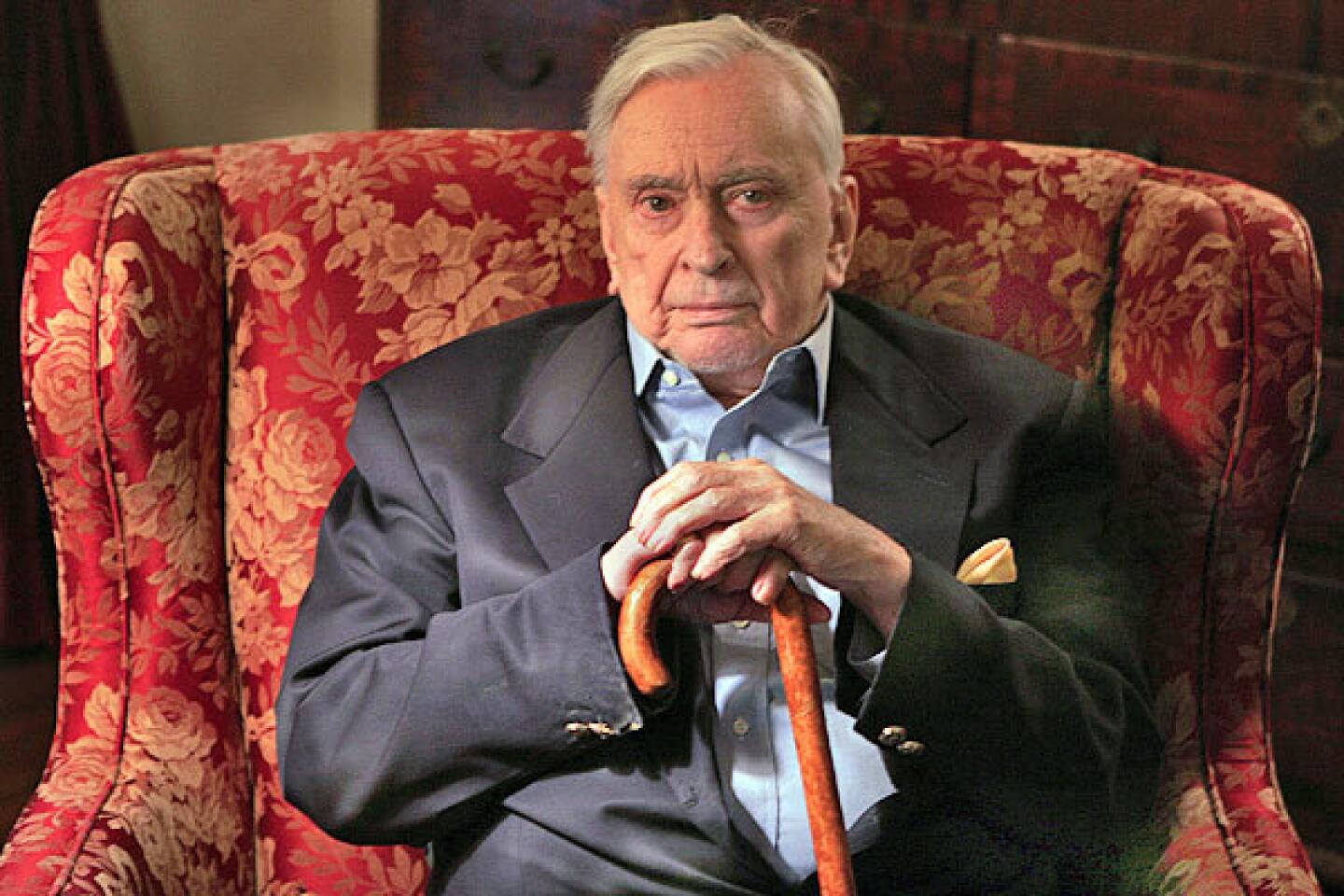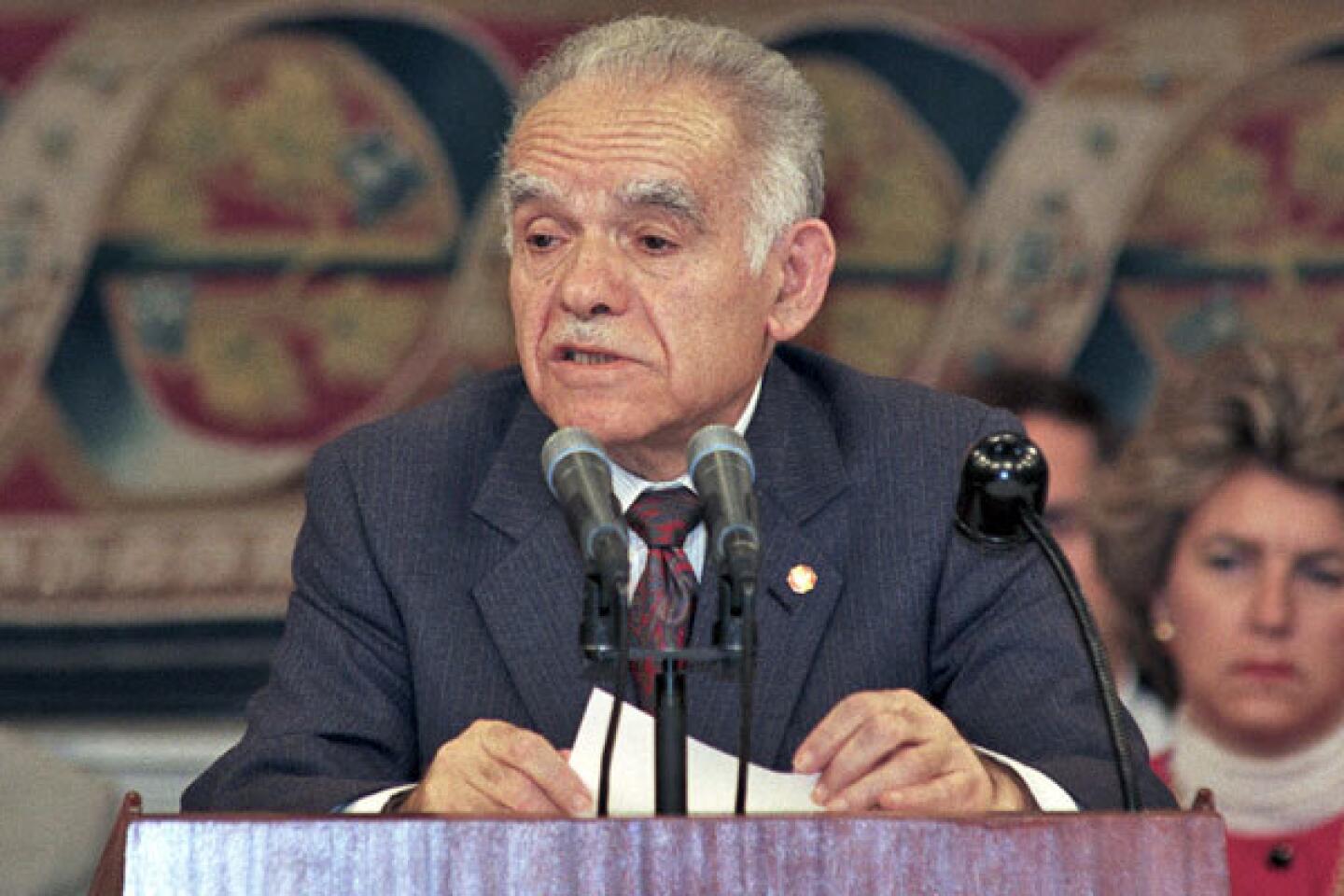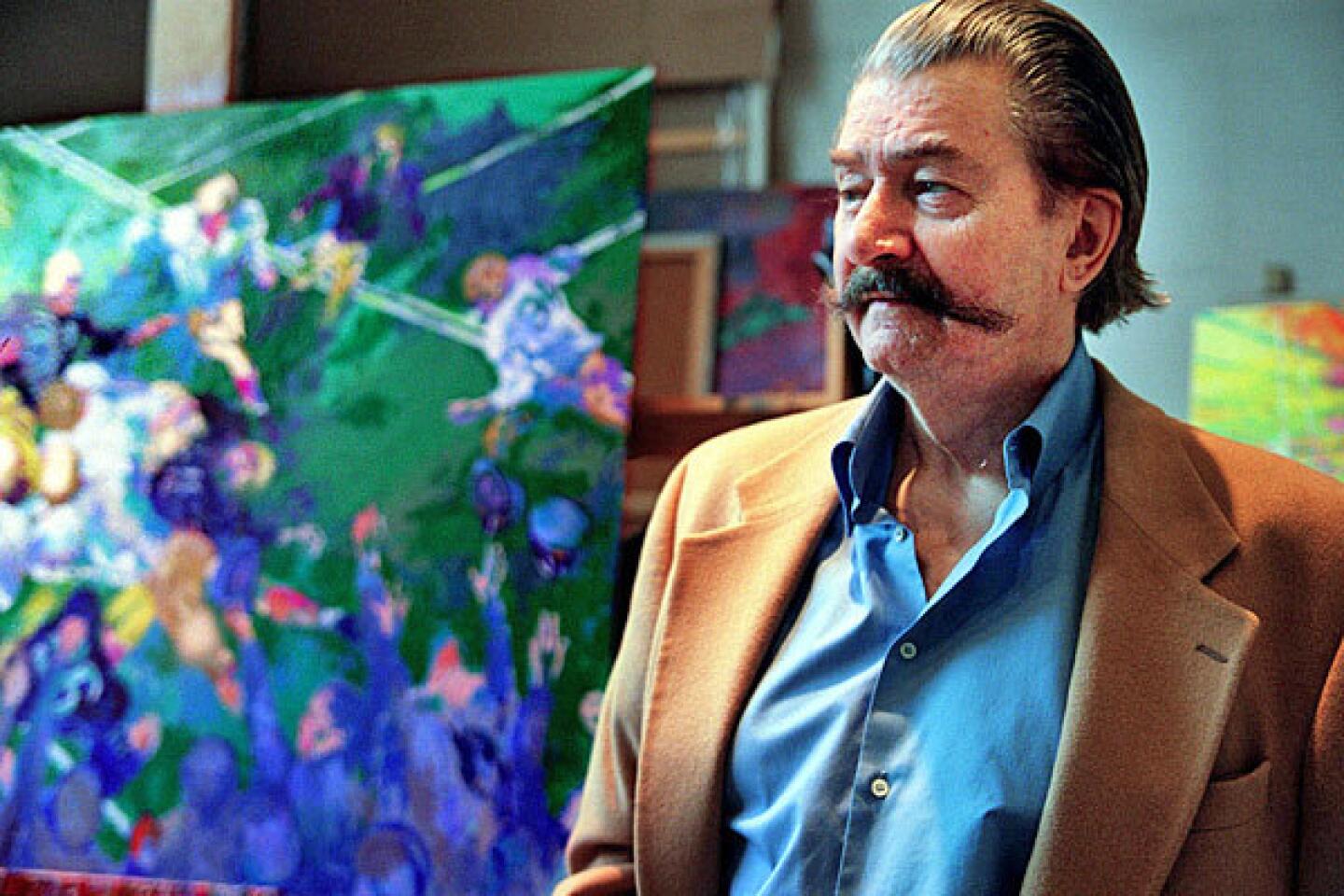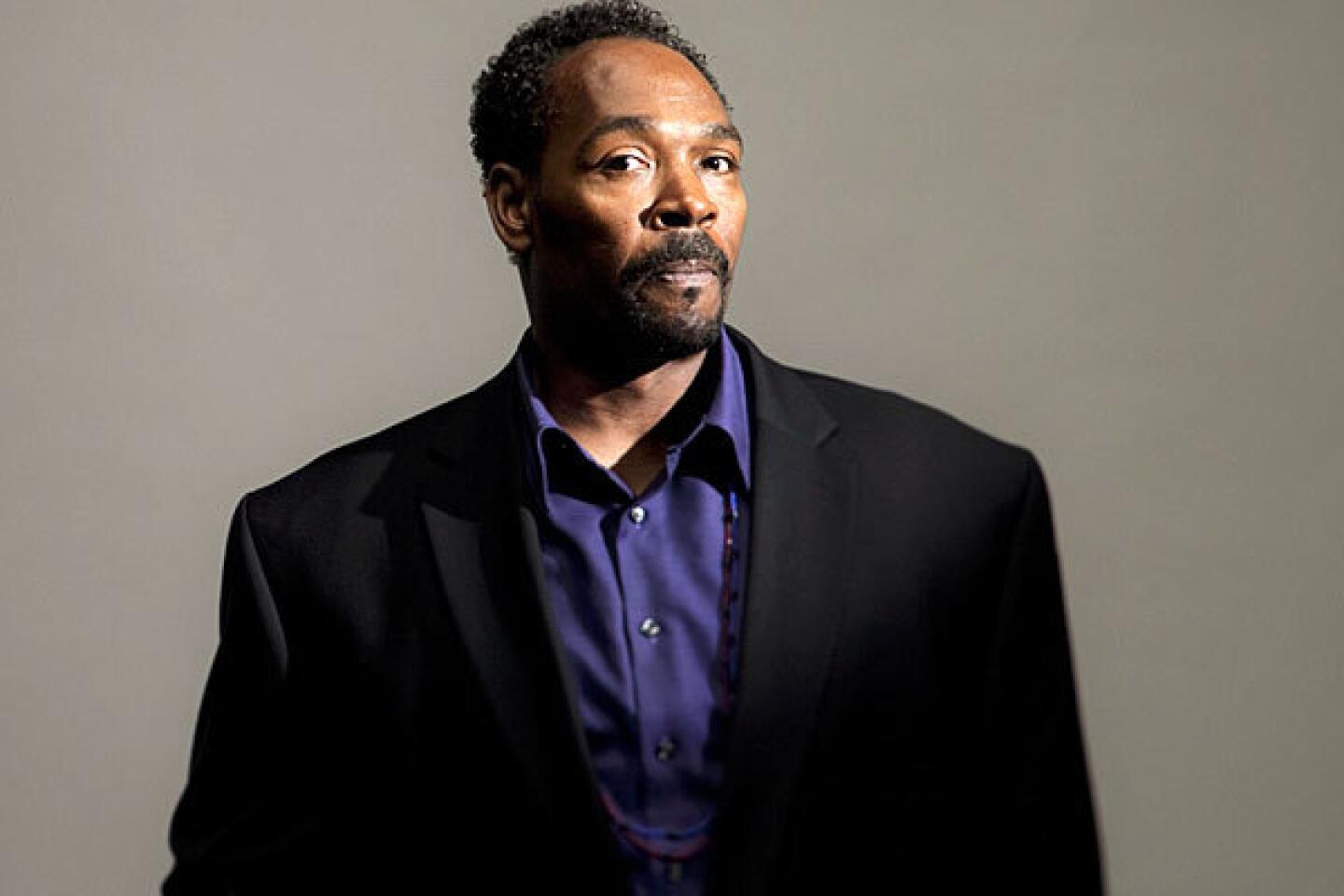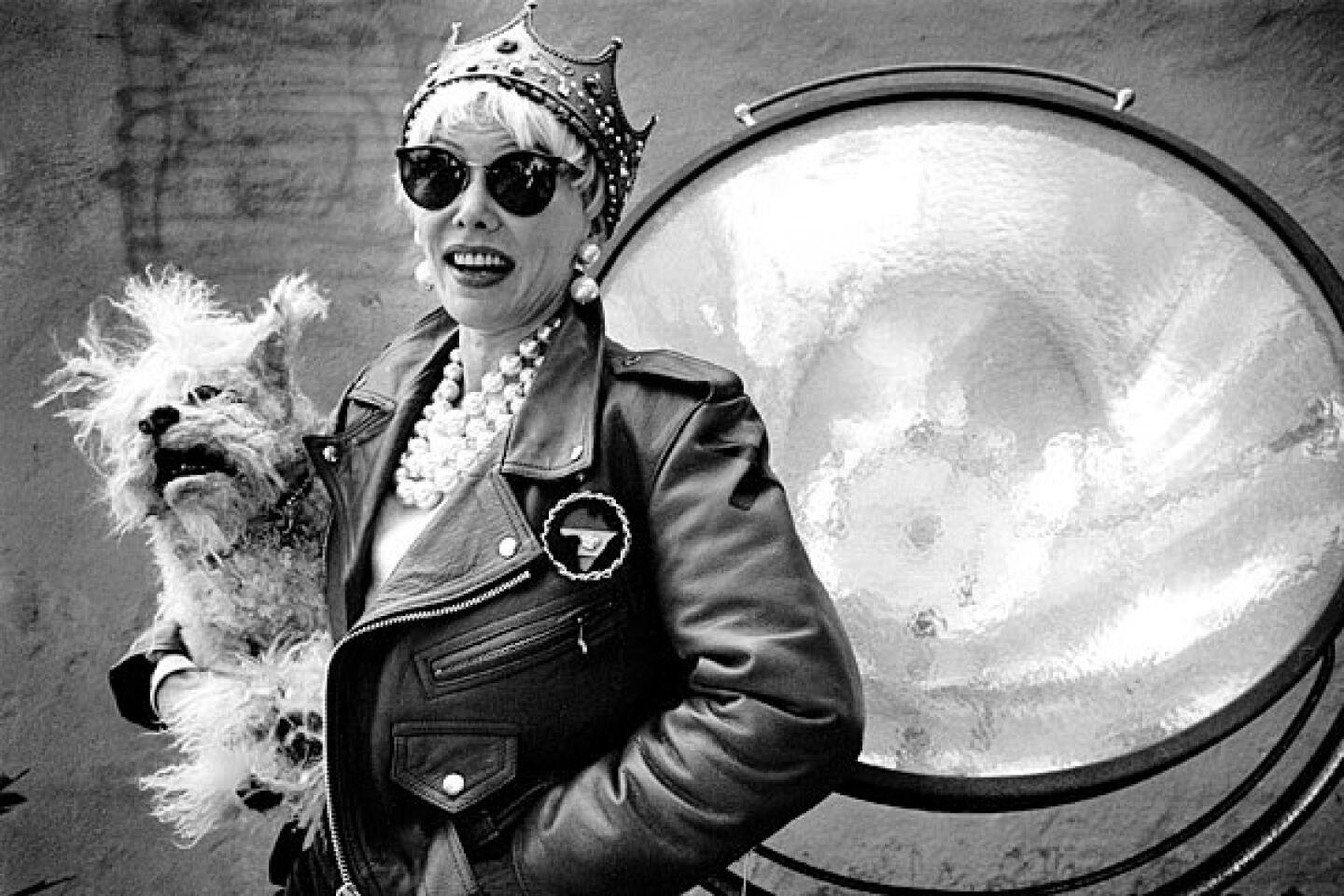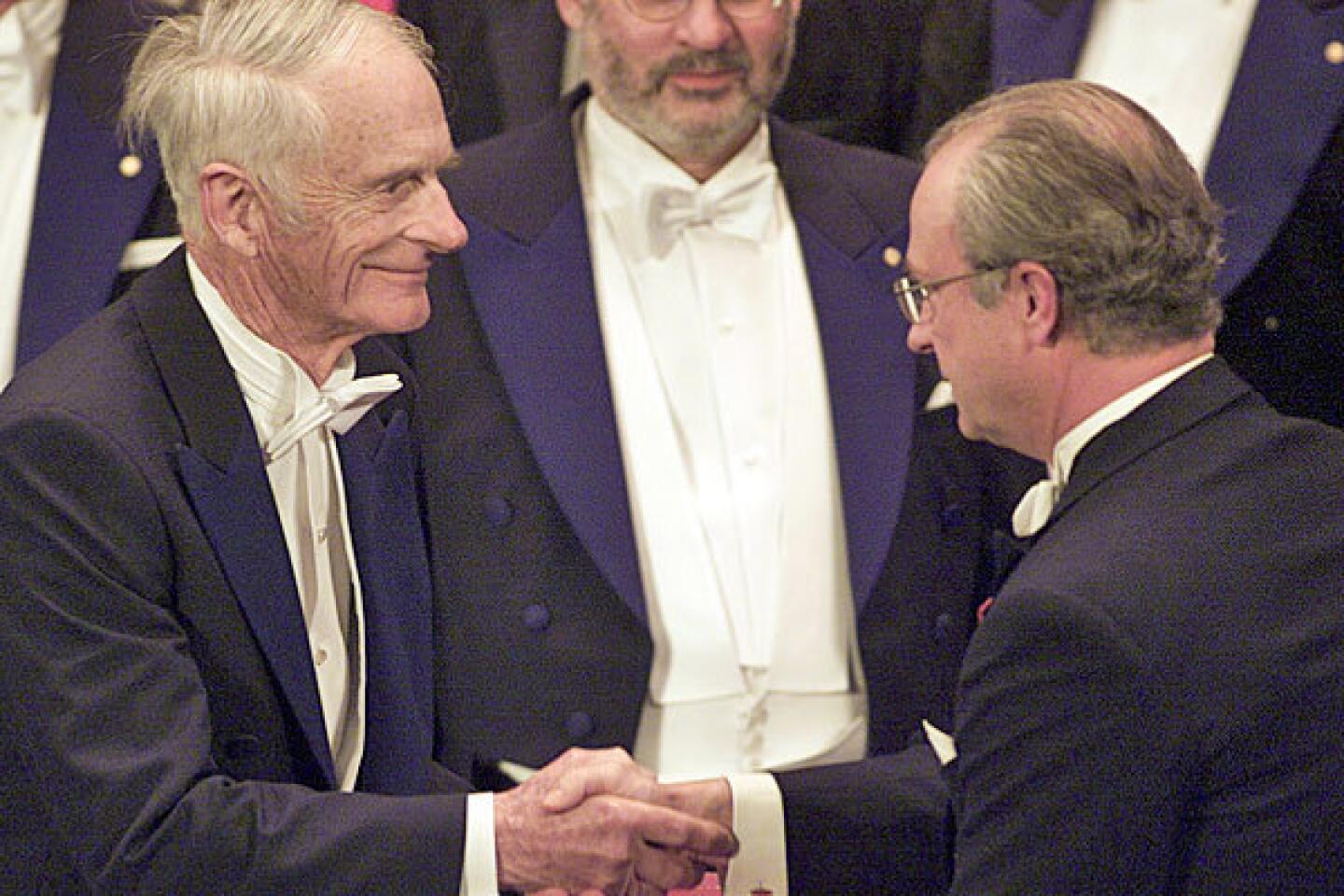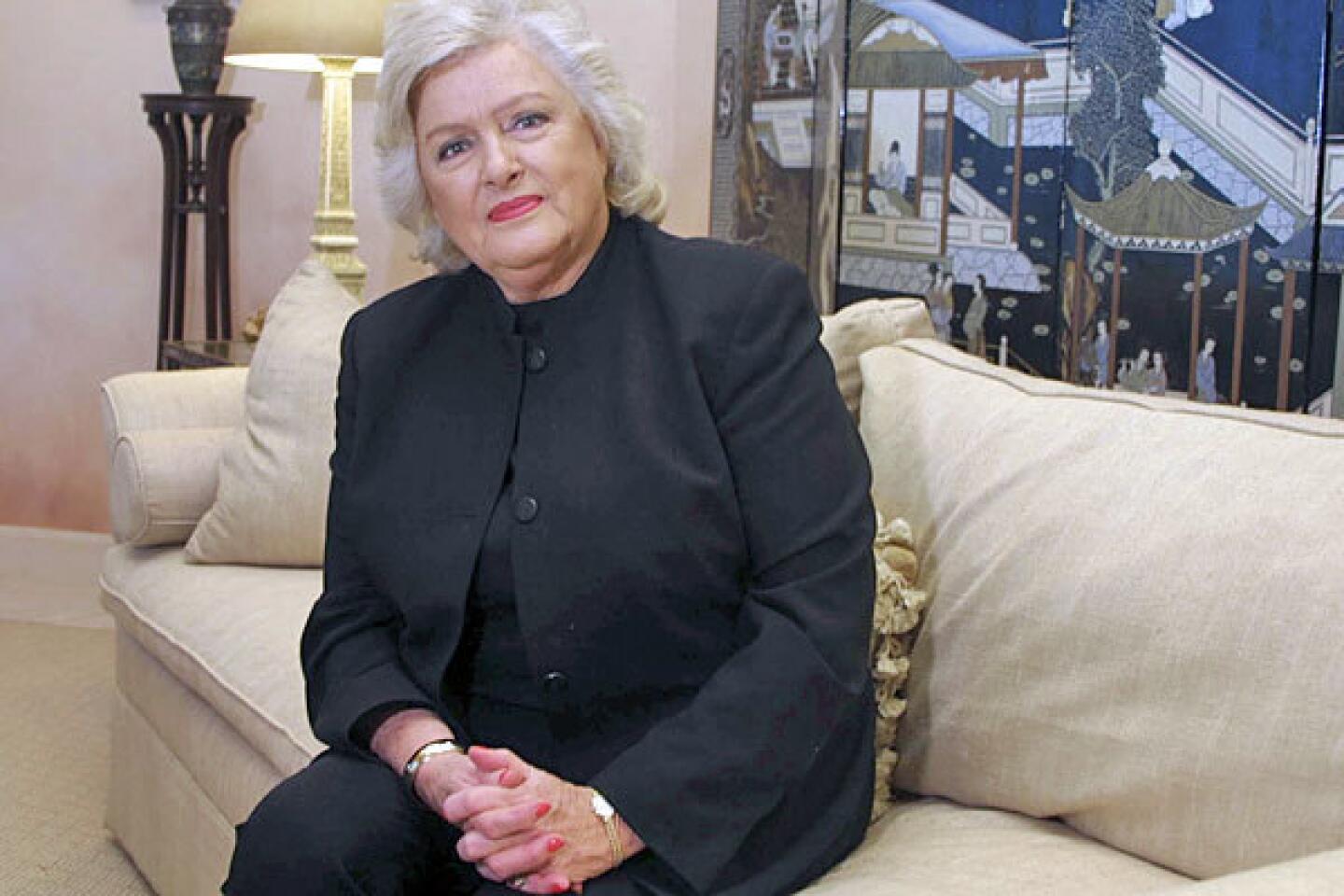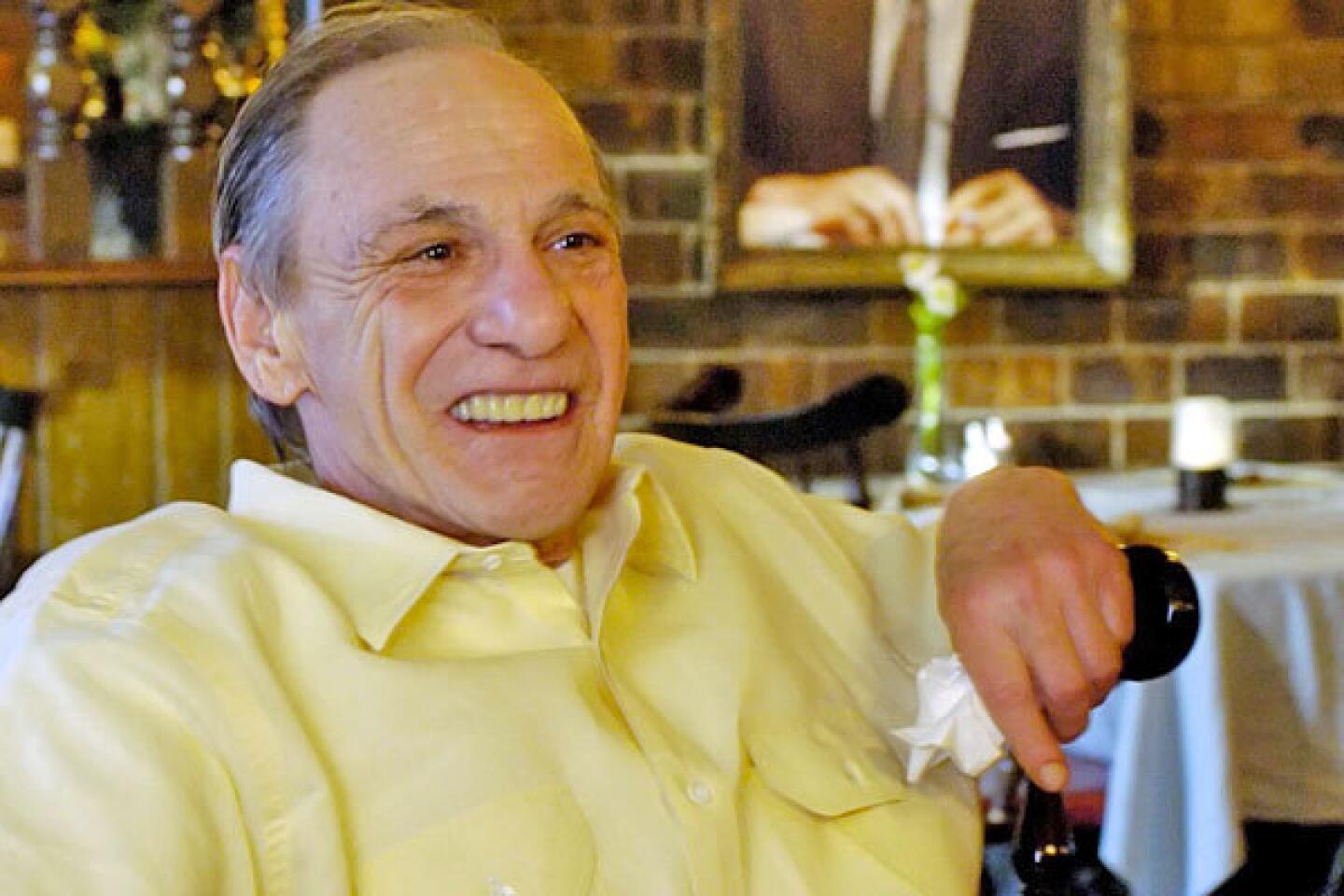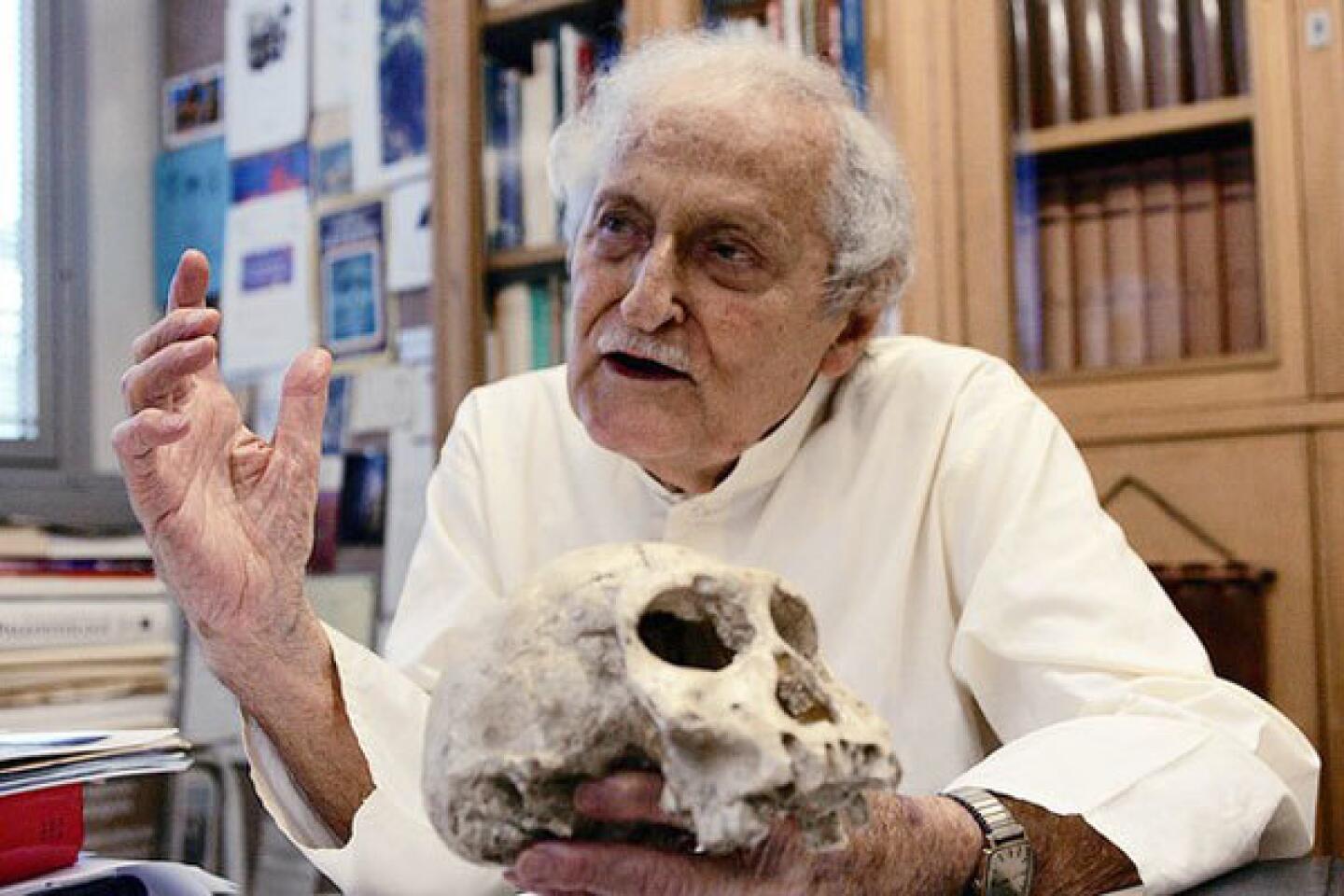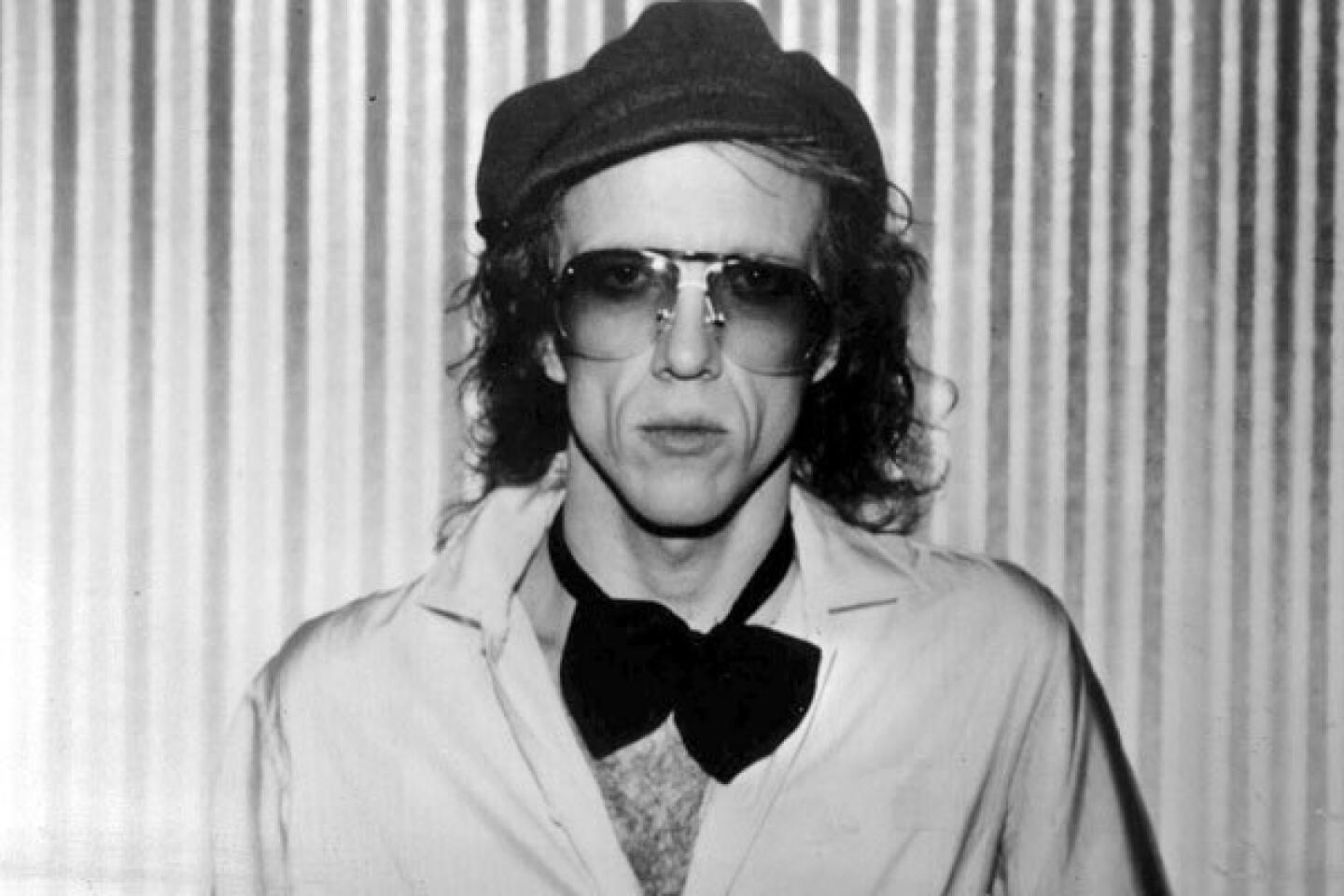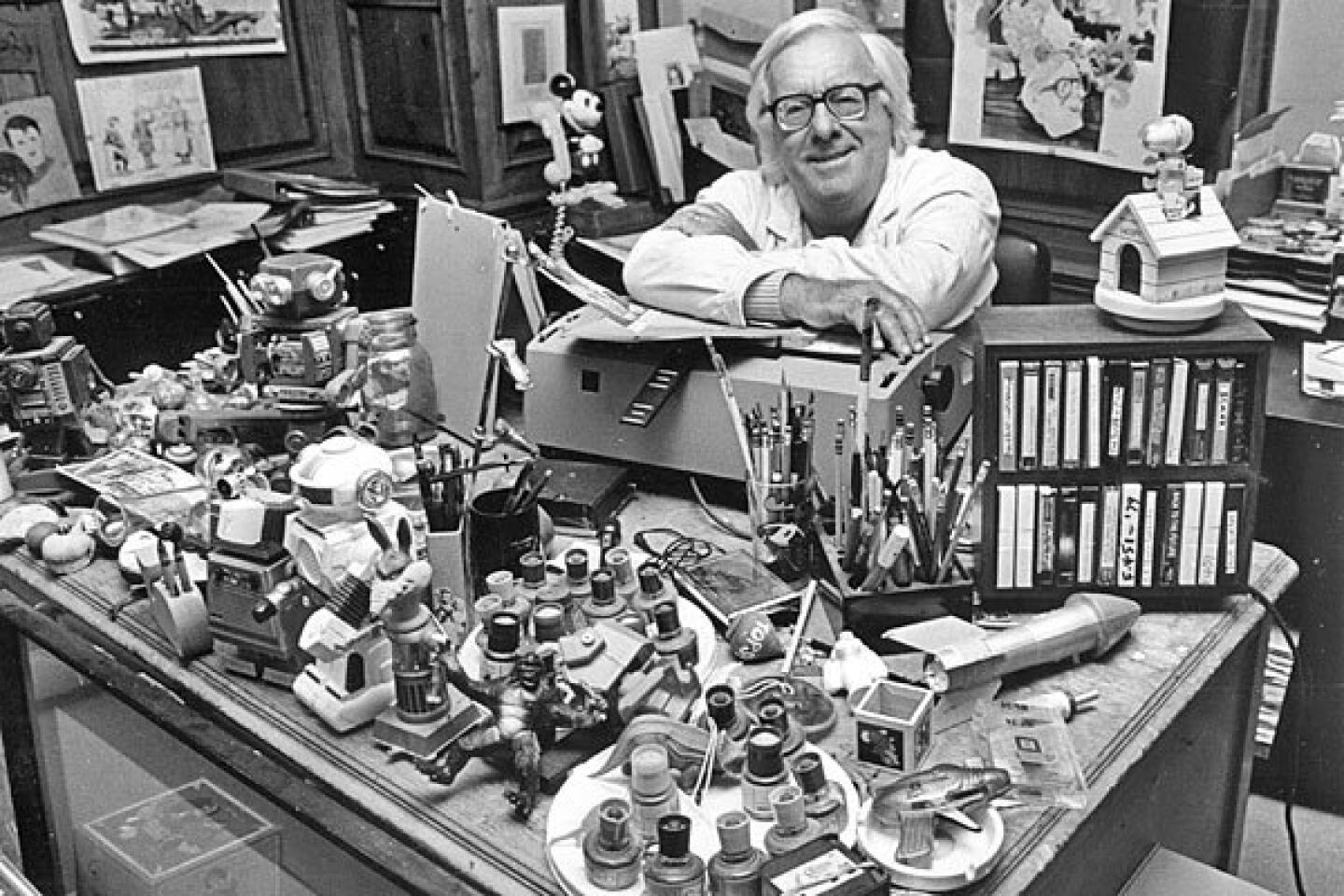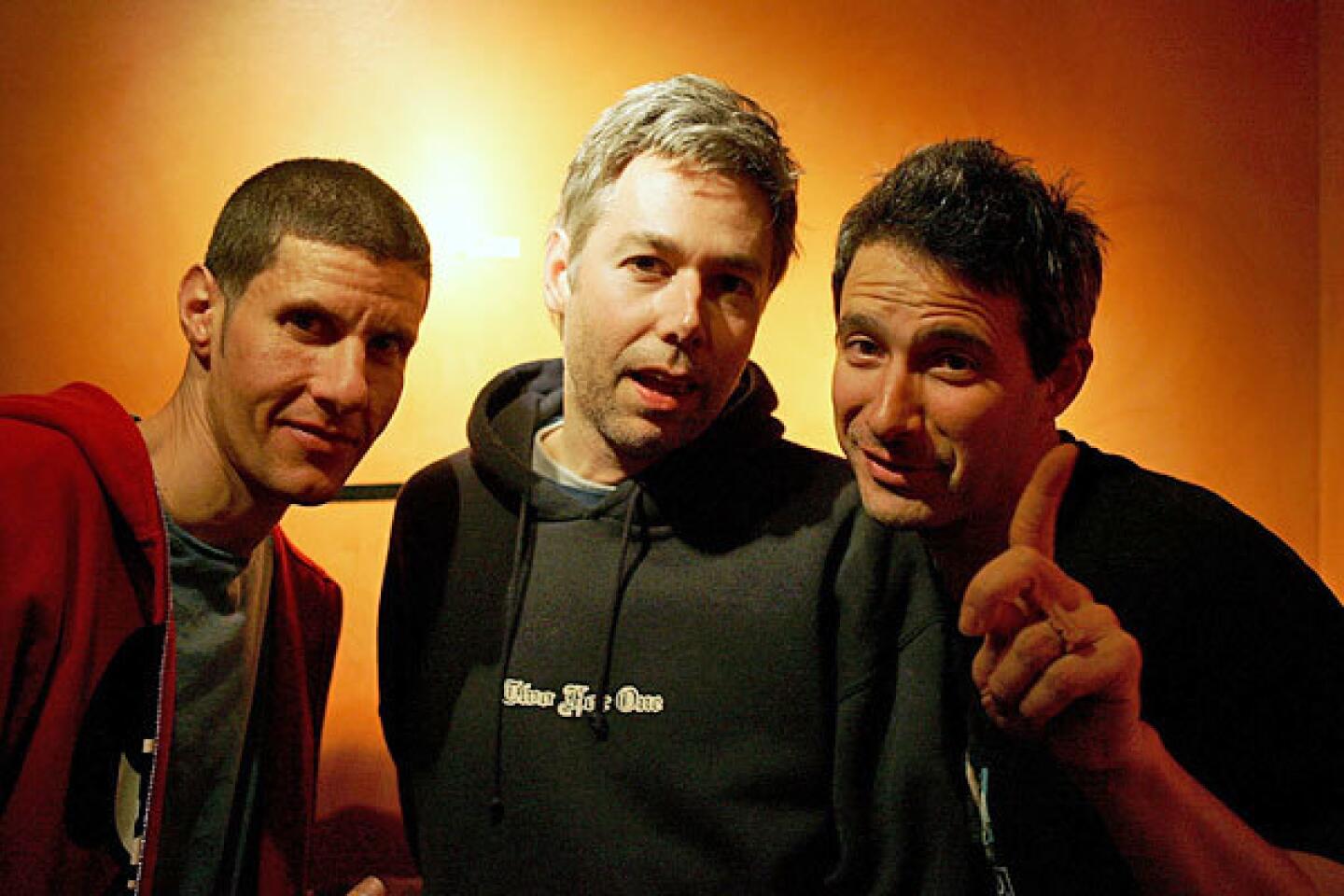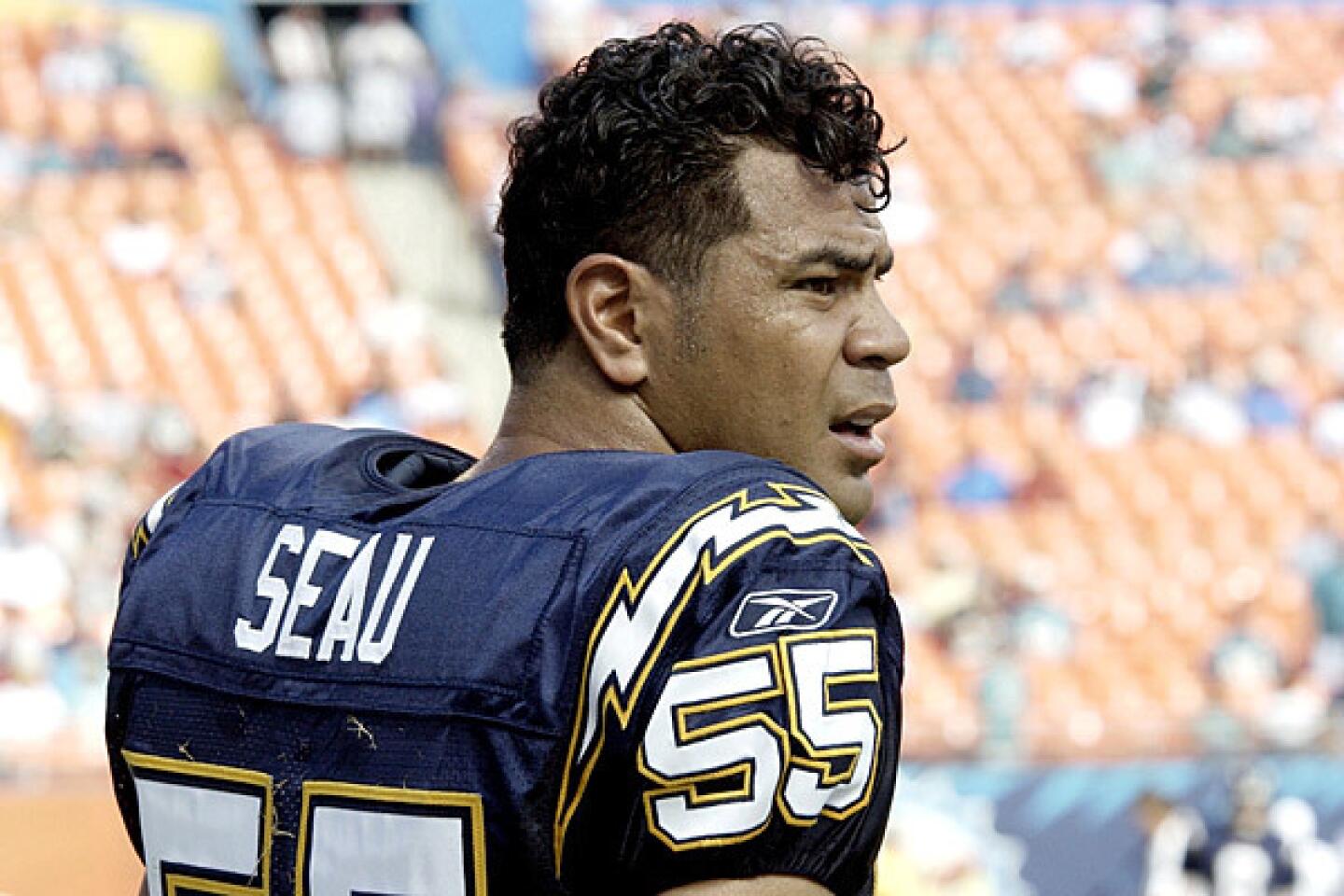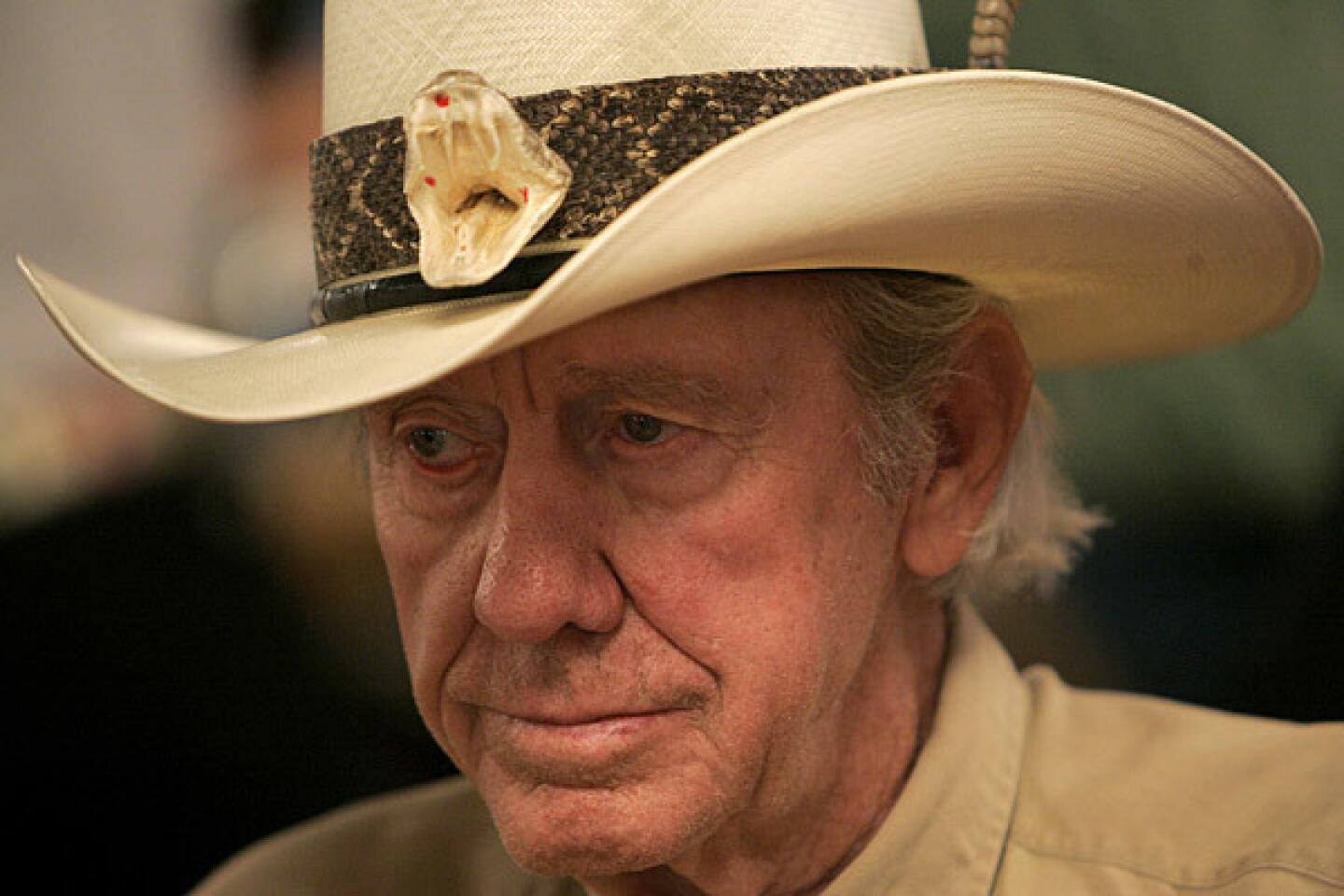Harry Crews dies at 76; Southern writer with darkly comic vision
Harry Crews, a rough-hewn Southerner who drew a keen following with novels that describe a Hieronymus Bosch landscape of grotesques — characters who are tossed into rattlesnake pits, walk on their hands, croon lullabies to a skull and literally eat a car — died Wednesday in Gainesville, Fla. He was 76.
The cause was neuropathy, according to his former wife, Sally Crews.
The word “original” only begins to describe Crews, whose 17 novels place him squarely in the Southern gothic tradition, also known as Grit Lit. He emerged from a grisly childhood in Georgia with a darkly comic vision that made him literary kin to William Faulkner, Flannery O’Connor and Hunter S. Thompson, although he never achieved their broad recognition.
Sometimes critics faulted him for letting perversity run amok (“… it’s all too much and still not quite enough,” a 1998 Newsday review said of one of his novels), but he was admired for his spare style, black humor and fierce imagination.
“He was willing to write about outrageous things,” said Stephen Corey, editor of the Georgia Review, which recently ran part of an unpublished memoir by Crews. “He wrote extremely well about the world he grew up in, dirt-poor southern Georgia. He was also willing to go the extra step sometimes and write about the strangest, most outrageous part of that already strange and unusual world.”
A nonfiction work — his memoir, “A Childhood: The Biography of a Place” (1978) — rivals his fiction in its recounting of events both grim and absurdly hilarious and is widely considered his best work. The assault of memories was so brutal that he lost himself in oceans of booze and abandoned fiction for almost 10 years, but he did not waver from his oft-stated belief that “the writer’s job is to get naked, to hide nothing, to look away from nothing.”
Born June 7, 1935, on the edge of a swamp in Bacon County, Ga., Harry Eugene Crews was the son of tenant farmers so poor that sometimes all he had to eat was the clay soil. His father died of a massive heart attack in the family bed before Crews turned 2.
At 5 he contracted polio, which for a time so contorted him that gawkers came from far and wide. Calamity struck again at 7, when he fell into a caldron of boiling water meant for slaughtered pigs and burned the skin off his body.
“I felt,” he wrote in the memoir, “how lonely and savage it was to be a freak.”
With his best friend, he escaped into the pages of the Sears, Roebuck catalog that came every month. They turned the models with their unblemished faces and perfect physiques into characters who married each other, had children and got into trouble that often ended bloodily. “I was seduced to the making of worlds that had never existed, and seduced also to contriving a tissue of lies that was — at least to me — truer than anything that had ever happened,” he later wrote.
He finished high school and went into the Marine Corps at the end of the Korean War. After completing his military duty, he used the G.I. Bill to attend the University of Florida, where he met his wife. They married and divorced twice, along the way producing two sons, one of whom drowned in a neighbor’s pool as a toddler.
Crews is survived by his son, Byron, and a grandson.
At the University of Florida he earned a bachelor’s degree in 1960 and a master’s in 1962. He taught English at a junior college in Fort Lauderdale for several years before joining the University of Florida faculty in 1968.
During his three decades there, he swore, drank and generally fractured the academic mold. With piercing blue eyes set deep in his craggy face, a limp caused by one or another violent encounter, a wardrobe that ran to sleeveless T-shirts and denims, and an assortment of tattoos (including one of a skull with a line from ee cummings, “how do you like your blue-eyed boy/ Mister Death”), he looked like the type of person one would cross the street to avoid meeting.
One of his students was bestselling crime novelist Michael Connelly. “I don’t remember a single book we were assigned to read,” Connelly said in an email last week, “but I remember him.... He was raw, and he was the first living writer I ever encountered.
“The singular lesson I took from him was his simple adage that if you are going to be a writer then you must write every day, even if only for 15 minutes. That last part about the 15 minutes has served me well. I’m going on 30-plus years of writing every day, even sometimes for only 15 minutes,” said Connelly, a former Times staff writer.
Crews’ first novel, “The Gospel Singer,” was published in 1968 to largely favorable reviews. Revolving around a traveling preacher, it features a murder-rape, lynchings and a man with an oversize foot. Walter Sullivan of the Sewanee Review wrote that the book had “all the hallmarks of a first novel … energetic but uneven, competent but clumsy, not finally satisfactory but memorable nonetheless.”
In later works Crews continued to stretch and sometimes redeem reality. There was the 600-pound man ensnarled with a sideshow madam (“Naked in Garden Hills,” 1969), the former high school football star whose life comes undone during his backwoods town’s annual rattlesnake hunt (“A Feast of Snakes,” 1976), the boxer reduced to punching himself out (“The Knockout Artist,” 1988), the young man with a tragic past drawn into a family even worse off than his own (“Scar Lover,” 1992).
Perhaps the most extreme of Crews’ scenarios unfurled in “Car” (1972), in which the son of a junkyard owner eats an old Ford Maverick chunk by chunk, in the process becoming a spectacle on national television. The New York Times said the novel “may very well be the best metaphor yet made up about America’s passionate love affair with the automobile.”
Crews, who also wrote a play and articles for Esquire and Playboy, rose daily by 4 a.m. and wrote until 9 a.m., always beginning with the same plea: “God, I’m not greedy. Just give me the next 500 words.”
More to Read
Start your day right
Sign up for Essential California for the L.A. Times biggest news, features and recommendations in your inbox six days a week.
You may occasionally receive promotional content from the Los Angeles Times.
